
FROM THE PRESIDENT’S DESK



FROM THE PRESIDENT’S DESK

It’s no secret that I believe deeply in the life-altering power of earning a four-year degree. At UTSA, our work revolves around creating accessible pathways to success for our students to build better lives for themselves and create lasting, generational change for their families. It’s a privilege to be a part of each student’s journey, and it brings me great joy to witness the success each of them achieves when they go out into the workforce to find their place in the world.
Across our campuses, we’re intentionally focusing our collective efforts on growing the talent pipeline for the city and the state, focusing on strategic initiatives and opportunities to ensure our students are career-ready. We’ve intentionally aligned our top degree programs to our region’s most in-demand industries while collaborating with key partners, like our colleagues at greater:SATX Regional Economic Partnership. We are producing Tier One talent and serving as the principal workforce driver for the top employers across San Antonio and Texas.
In this issue of Sombrilla, you’ll read all about how our Roadrunners are transforming the workforce, leaning in on their talents and their “learning by doing” experiences to go out and change the world. From construction project managers at Webber to cybersecurity professionals at Accenture, our graduates are making big waves and launching impactful professional careers that will serve them and our communities well. I know you’ll enjoy reading the profiles in this issue that exemplify just that.
Lastly, I’d be remiss if I did not recognize one of our greatest champions who inspired these positive trajectories among our students — late businessman, philanthropist and honorary Roadrunner, Carlos Alvarez. Carlos believed deeply in the transformative power of education and dedicated his time, talents and generosity to countless UTSA students and programs. His passion instilled a sense of pride in our students that will continue to live on as they graduate, go out into the workforce and achieve their dreams.
As always, I want to express my immense gratitude for our Roadrunner community. Together, we are changing the lives of our students and their families as we champion upward mobility across our region and state.
With appreciation,
Taylor Eighmy President
FALL 2024 | ISSUE
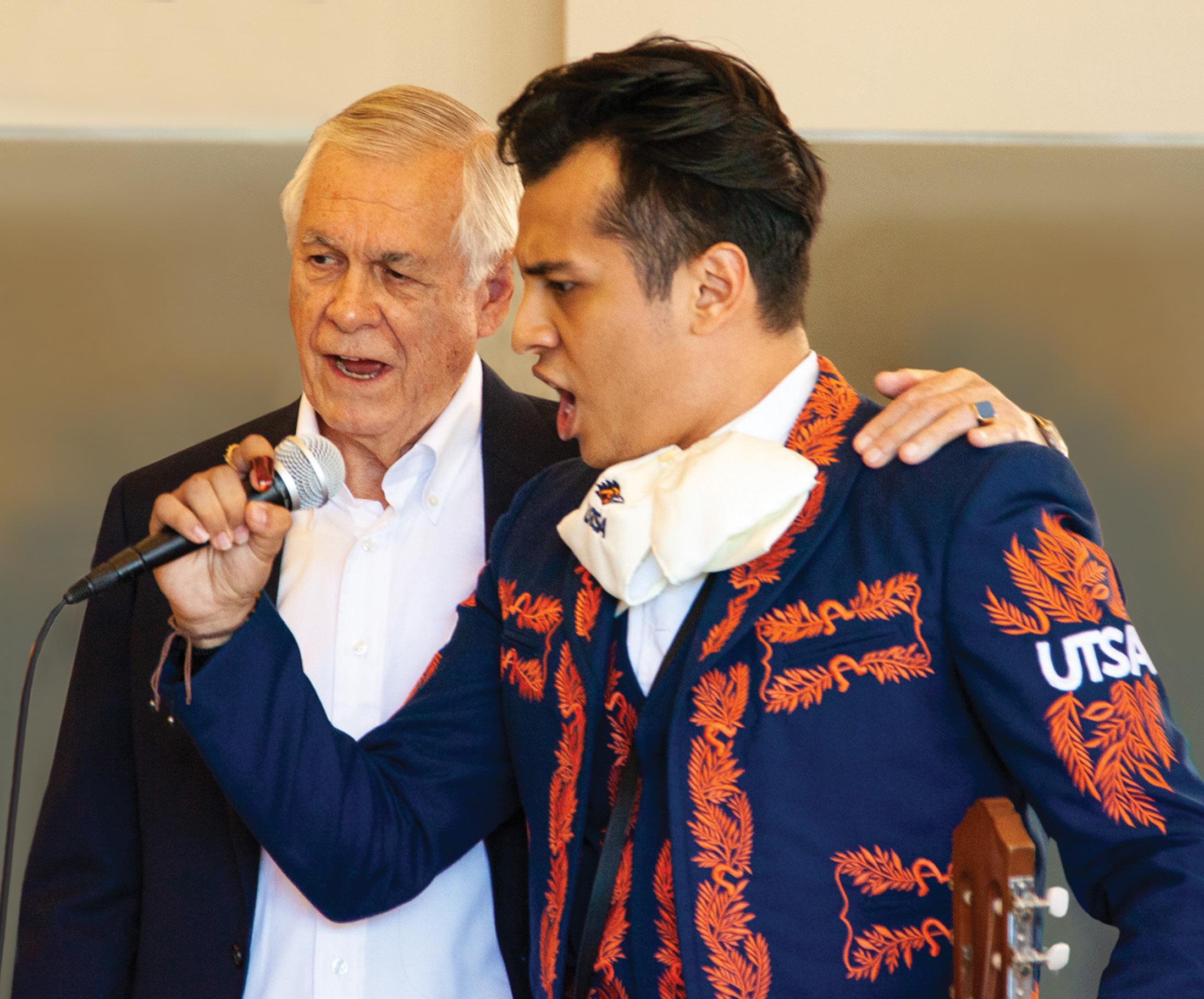
Carlos Alvarez sings a canción with Alezander Garcia, a vocalist for UTSA Mariachi Los Paisanos, during the celebration honoring Alvarez and his wife, Malu, for their $20 million gift to the Carlos Alvarez College of Business. The late businessman and philanthropist was an unwavering champion for UTSA students and the future generations of leaders.
TOMORROW'S
UTSA’s
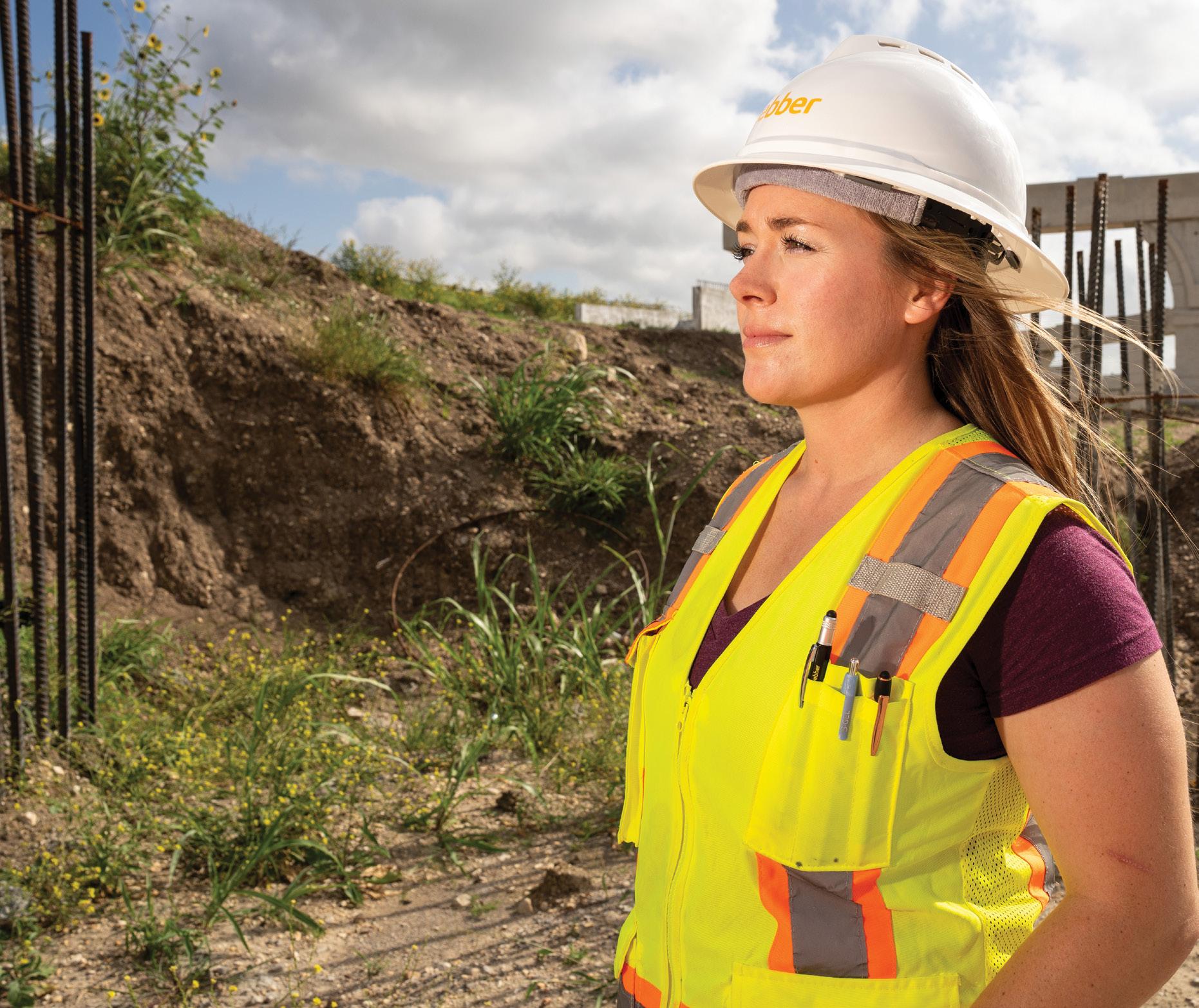

TAKING FLIGHT ACROSS CULTURES
The Urban Bird Project takes to a San Antonio neighborhood to help the community find a connection between birds and culture.
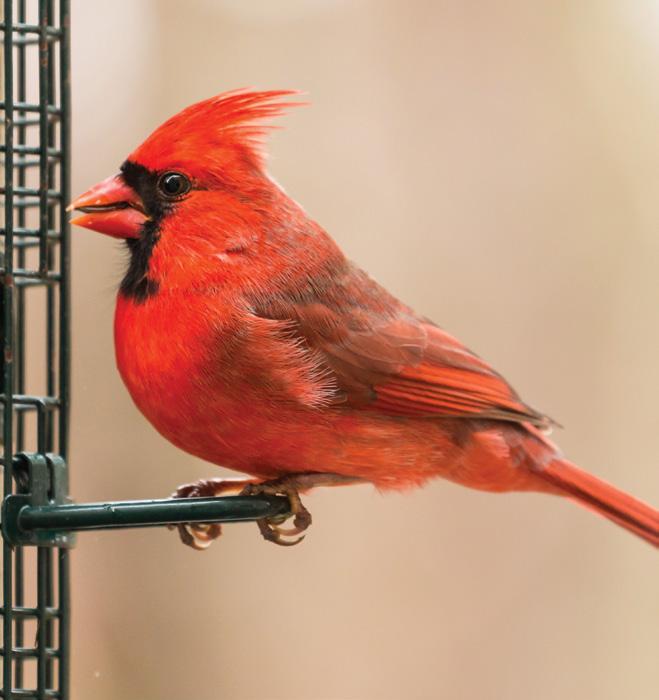
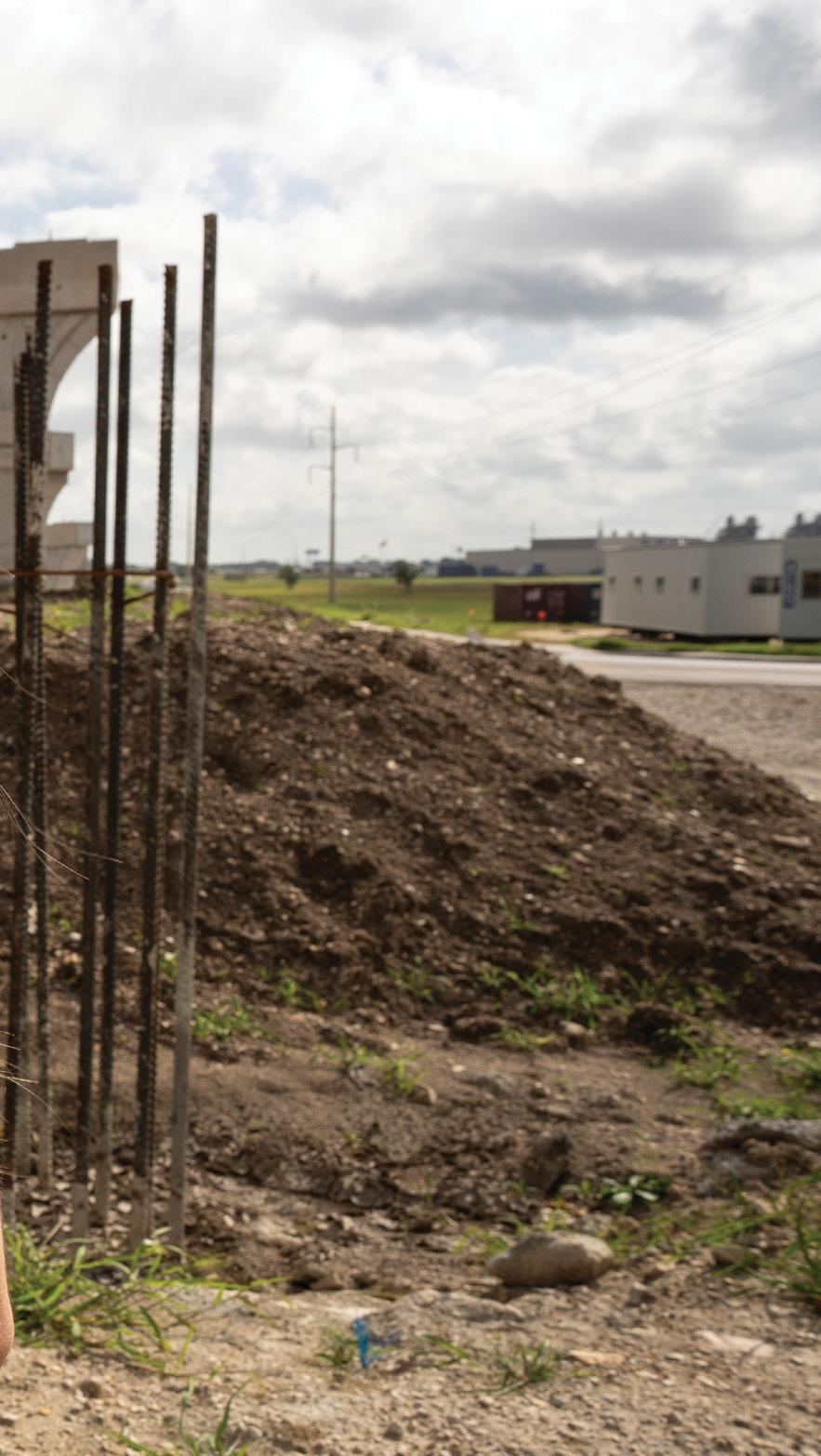

A pair of combat veterans share how the UTSA Office of Veteran and Military Affairs guided them to profound paths in life.
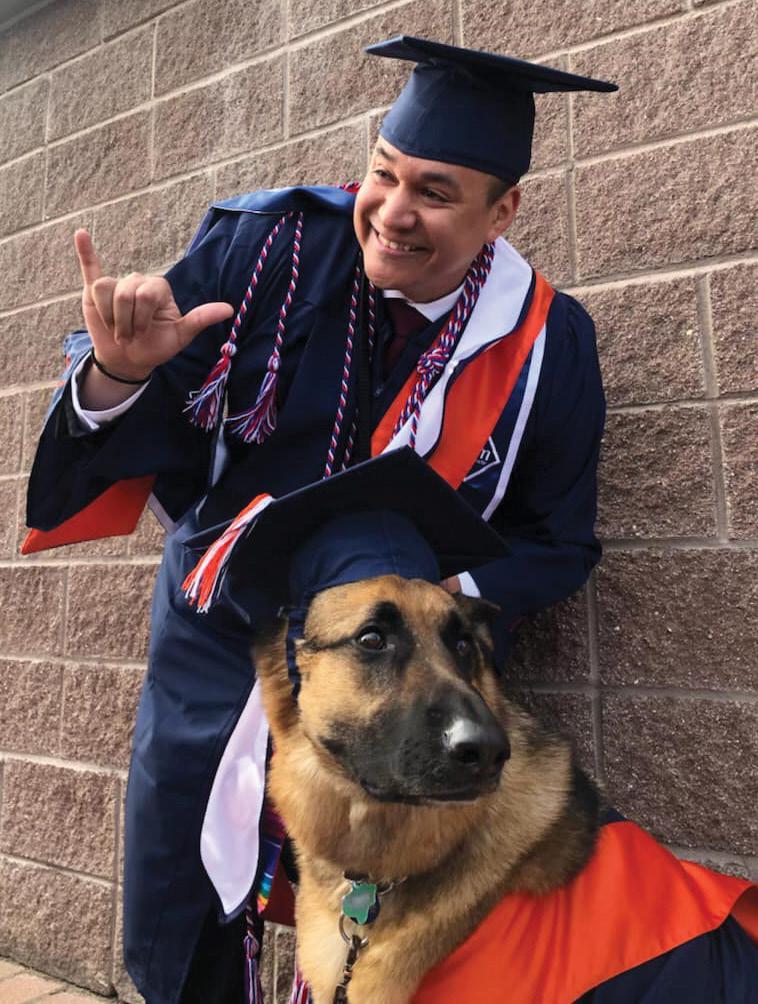
CAMERA. TRANSFORMATION!
The UTSA Film and Media Studies program creates career pathways for aspiring student filmmakers and content creators.
WE ARE ALL CONNECTED Malgorzata Oleszkiewicz-Peralba finds connections in the human spirit across different cultures.
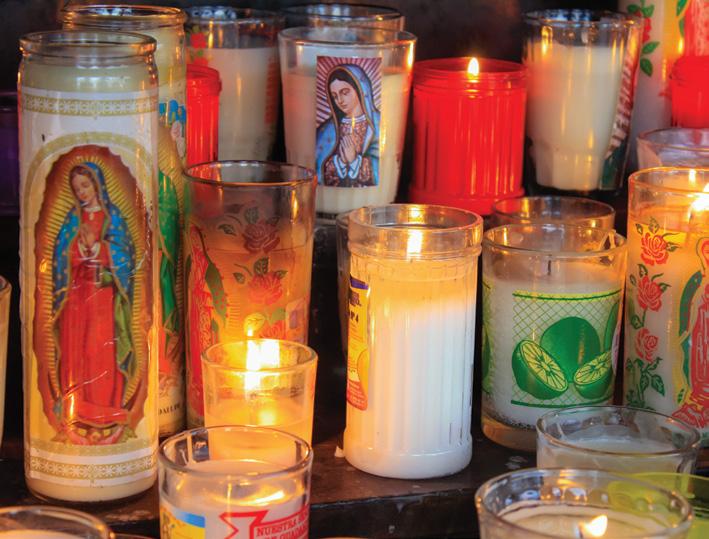
TAYLOR EIGHMY PRESIDENT
TERESA NIÑO VICE PRESIDENT FOR UNIVERSITY RELATIONS
JOE IZBRAND ASSOCIATE VICE PRESIDENT FOR STRATEGIC COMMUNICATIONS AND EXTERNAL AFFAIRS
MARGARET LAMAR MANAGING EDITOR
VALERIE BUSTAMANTE JOHNSON SHEA CONNER SENIOR EDITORS
CHRISTI FISH
TRICIA LYNN SILVA ASSOCIATE EDITORS
CORAL DIAZ
NOELLE ARTIGUE
GRAPHIC DESIGNERS AND ILLUSTRATORS
KATIA DIAMANTE SOCIAL MEDIA EDITOR
We want to hear from you. Do you want to share your thoughts on one of our stories? Or would you like to change your contact details? Please contact us: EMAIL: SOMBRILLA@UTSA.EDU
SOMBRILLA MAGAZINE OFFICE OF UNIVERSITY STRATEGIC COMMUNICATIONS ONE UTSA CIRCLE SAN ANTONIO, TX 78249-1644
SUBSCRIBE TO SOMBRILLA MAGAZINE ONLINE WWW.SOMBRILLA.UTSA.EDU
Sombrilla Magazine is the official publication of The University of Texas at San Antonio. It is distributed without charge to students, alumni, faculty, staff and friends of UTSA. The magazine strives to capture the intellectual, cultural and social life of the university.
sombrilla /sohm–BREE–yah/ Spanish for Umbrella

UTSA is partnering with Morgan’s MAC to evaluate a groundbreaking national model of care for individuals with special needs
Long gone are the days when San Antonio caregivers of people with special needs and disabilities are on their own to figure out which services they need, when they need them and how to fit it all into their schedules. Morgan’s Multi-Assistance Center (Morgan’s MAC) has forged a new way forward for families, with coordinated care among more than 30 community partners, providing what they call “Ultra-Accessible” services for anything from speech therapy to legal services, and even dental care and eye exams.
“An individual with disabilities — especially if they are diagnosed in their early childhood — may go to different therapies that are all over the city,” says Leslie Neely, associate professor in educational psychology at UTSA and director of the UTSA Child and Adolescent Policy Research Institute. “Oftentimes caregivers can’t work full-time because they spend so much time navigating services and taking them to different appointments. Morgan’s MAC will improve the health and quality of life for these individuals and their caregivers.”
Erica Sosa, associate dean for research success, professor of public health and co-
director of the UTSA Center for Community Based and Applied Health Research, and Neely, who is also the associate director of the UTSA Brain Health Consortium, are determined to help members of Morgan’s MAC succeed by helping evolve and streamline their services.
“We formed the Evaluation and Research Coordinating Center (ERCC), in which UTSA is the leading community partner, to perform an external evaluation of the Morgan’s MAC Care Model and lead innovative research efforts,” Neely says.
The Morgan’s MAC Care Model consists of team members, also known as MAC Navigators, serving as single points of contact for families.
The Navigators guide caregivers to service providers and track the children’s progress and their follow-ups through an electronic platform called MACNav. This new groundbreaking system has promise to become a model for others across the country who are seeking to serve people with disabilities and special needs.
The ERCC will be the primary group to evaluate the effectiveness of Morgan’s MAC and help share findings with the larger community.
“UTSA researchers are collecting surveys and qualitative feedback from MAC members
by Valerie Bustamante Johnson
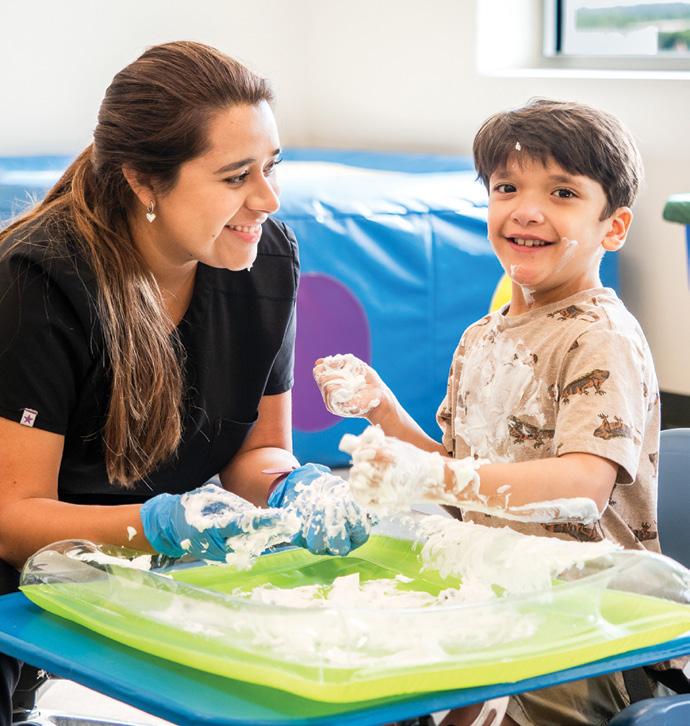
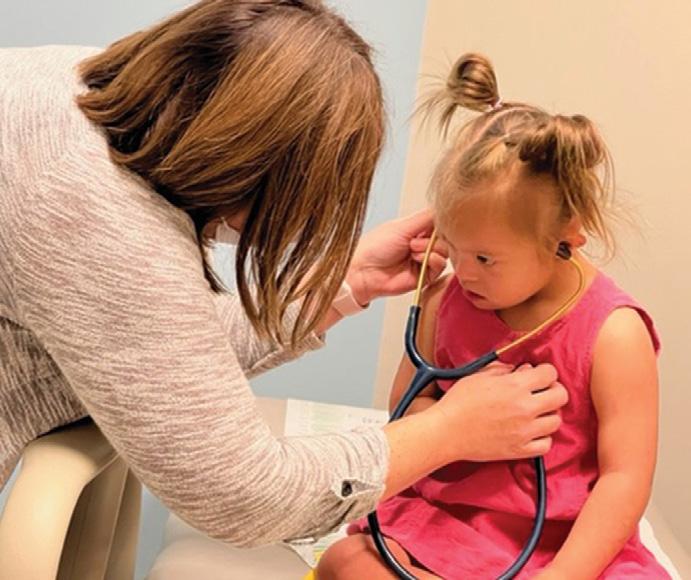

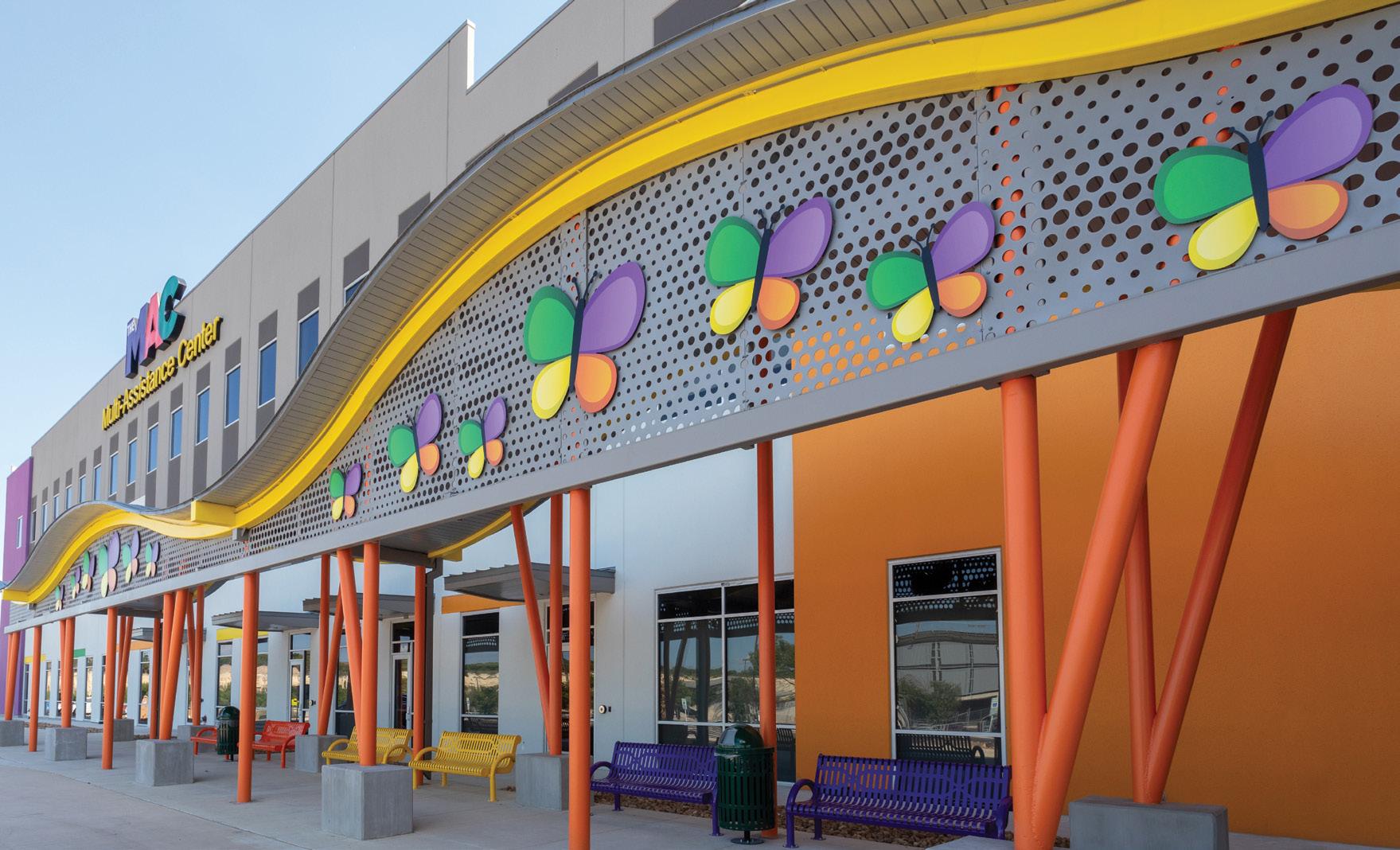
to help assess the quality of services provided and the overall satisfaction from the patient perspective,” Sosa says.
The goals of the ERCC are to inform the work being done at Morgan’s MAC, identify opportunities for quality improvement, share success stories, collaboratively pursue funding opportunities, and facilitate innovative research to improve quality of life for people with disabilities. These efforts include creating a network of researchers to collaborate with Morgan’s MAC to improve care in San Antonio and evaluate the Morgan’s MAC Care Model.
“Every quarter we will collect and share data, including process
data and member surveys, and we will be able to report on how the Morgan’s MAC Care Model is improving care and the quality of services,” Sosa says. “We are also looking at the impact of the coordination of care on quality of life and health outcomes. Morgan’s MAC has a very innovative model. It’s the first of its kind in the nation, so it will be exciting to tell the story.”
Through the partnership, UTSA is also currently providing severe behavior support as part of the autism committee at Morgan’s MAC, which Neely leads.
“One of the things that was clear early on, and not a surprise to me, was the need for severe
behavior support,” Neely says. “Severe behavior can be very difficult for caregivers to navigate, and it just so happened that we were at the right place at the right time to help fill this need."
In the Severe Behavior Lab, the researchers are analyzing the client’s behavior on a microscopic level for two hours per week as part of behavioral analyst therapy.
“I believe that there is no such thing as a ‘bad’ kid. Kids may be aggressive or destructive because they are trying to communicate a want or a need, or perhaps discomfort or pain,” Neely says. “To help with this issue, we conduct our assessment to figure out what they are trying to communicate.
We take observational data, graph it, and make a conclusion or translation of what their behavior means for them. Then we design an intervention that is tailored to them. Sometimes we are looking at making their communication more effective, more efficient and easier than the problematic behavior.”
Some communication strategies they may teach include communicating with pictures, text, gestures, or sign language. “We will teach whatever style they want, and sometimes it means all of the options, “ Neely says.
While the main goal at Morgan’s MAC is to ensure that the adults and children see an improvement in their quality of life, Neely adds that it is going to make an even greater impact for the city of San Antonio.
“Oftentimes when we go to the funders, the first question they ask is how many kids will be affected, and we don’t always have that data,” Neely says. “The collective work of Morgan’s MAC will shine a light on the real needs of the community, and we will now have the data to show it. S
The collective work of Morgan’s MAC will shine a light on the real needs of the community, and we will now have the data to show it.
BY VALERIE BUSTAMANTE JOHNSON
with the San Antonio community, UTSA’s Urban Bird Project is tapping into the science and the treasured stories about the birds that live among us
We see birds all around us — at the park, along the streets and highways, and in our backyards. And yet, they aren’t like other wild creatures we see in our neighborhoods. For many communities in South Texas and in Mexico, birds have a much deeper connection to their culture.
For instance, when you see a Northern cardinal sitting on a tree branch or on your backyard fence, you may hear from your abuela or abuelo that the bird is a loved one who has passed. You may think it’s a parent or grandparent paying a visit, letting you know everything is going to be alright. While it’s unknown what the origin of this belief is, it’s very popular in several communities, especially for those who grew up in San Antonio.
Building a bridge between these kinds of cultural connections and the science of avian conservation was
the goal of the Urban Bird Project when it launched more than three years ago. This interdisciplinary project integrates avian ecology, Mexican-American studies, and indigenous studies through a community science program about local, migratory and culturally significant birds and their environments.
“We came up with the Urban Bird Project to address some of the missing gaps in promoting STEAM learning and nature engagement through those different disciplines with a focus on minoritized communities who traditionally are excluded from certain learning opportunities,” says Jennifer Smith, assistant professor in integrative biology.
The project connects San Antonio ISD and UTSA students with residents from the San Antonio community, to conduct research in community science — an approach that integrates humanities and science through community-based research that elevates local experts and multiple ways of engaging with nature.

As an early part of the project, UTSA launched the initiative “Seeding Success for Underrepresented Students” at schools in San Antonio ISD. Students at Woodlawn Academy, Longfellow Middle School and the Young Women’s Leadership Academy were fully engaged in the cultural significance of birds in the Mexican and Indigenous cultures in addition to avian ecology.
The community science project was led by a cross-disciplinary UTSA team that included Smith with Amelia King-Kostelac, assistant professor of practice in integrative biology; Kenneth Walker, associate professor of English; and Claudia GarcíaLouis, associate professor of educational leadership and policy studies.
“It’s a project that tries to combine nature and culture approaches,” Walker says. “This project tries to bring those things into a relationship to offer the students, us and
our graduate students multiple pathways to care, protect and conserve the people, birds, land and the environment.”
While learning about the Mesoamerican codices and the cultural, political and economic significance of birds and feathers to Indigenous groups, exploring the students’ personal identity was also an important component of the project.
“What we were trying to do in the schools is make ancestral knowledge central to the students' educational experiences,” García-Louis says. “We asked them to think about what is being shared within the family in terms of birds and how the information is passed down from grandparents to parents to children. It extends beyond just being in the classroom, but also recognizing their grandparents and their family members as traditional knowledge holders that pass on knowledge via oral traditions.”
One common narrative amongst the students who have heard from their families is the significance of the cardinal. “The story of the cardinal is everyday knowledge in our memory, but it’s not everyday knowledge orally,” Urban Bird Project Graduate Mellon Fellow Carolina Hinojosa says. “The Urban Bird Project allowed them to be in a place where they could remember that. Many of them said, ‘oh yeah, my grandma did say that’ or ‘my grandma told me the blue jay was our relative, not the cardinal.’ That was a new one we hadn’t heard.”
Watch Indigenous rituals and exclusive videos on the Urban Bird Project.
Connecting underserved community members to nature was a key goal of the Urban Bird Project, and since backyard bird feeding has taken off as a popular pastime, the interdisciplinary team saw a perfect opportunity to work with people right where they live.
“We were interested in finding out whether backyard bird feeding affects the movements of common backyard birds, specifically Northern cardinals and Northern mockingbirds,” Smith says.
Smith and Lauren Granger, an integrative biology master’s student in UTSA’s Smith Wildlife Lab, took to the same neighborhoods where the Urban Bird Project was already engaging children in an afterschool community science club at neighborhood public schools.
“Recruitment was done through canvassing the neighborhoods,” Granger says. “It was a lot of knocking on people’s doors and informing them about the project.”
Granger worked with the residents to safely capture the birds who had established territories for the breeding season in the neighborhoods and placed Life Tags on them, which are small telemetry tags that record their movements. Seventeen Northern cardinals and eight mockingbirds were tagged for the project.
Thirty-six residents each hosted a node in their backyards, and two sensor stations were located at the Young Women’s Leadership Academy and Woodlawn Academy. The sensor stations served as the main base stations, which communicated to the 36 nodes that collected movement data from the Life Tags.
During the experiment’s first phase, half of the sites fed the birds for 21 days, while the other half served as control sites with no feed. Then the team flipped the feeding and control sites for the next 21 days.
The preliminary data showed some unexpected results. Feeding the birds increased the presence of cardinals by 9% but decreased traffic for the mockingbirds by 17%.
“With this data we’re trying to understand the potential effects of backyard bird feeding, which a lot of residents partake in, and then we will give that data both to the community as well as to the students,” says Granger.
Smith adds that while the science of collecting data and discovering the effects of backyard feeding was important, the process of engaging the community with the birds was equally valuable.
“It was such a pleasure to show them a bird up close that they’ve seen from afar at a feeder and see all of the different reactions,” says Granger. S
Through a $1.5 million grant from the Mellon Foundation, the Urban Bird Project has expanded . In a new UTSA course , students are working directly with the community on projects related to bird conservation and cultural connections .
SENSOR STATION
NODE
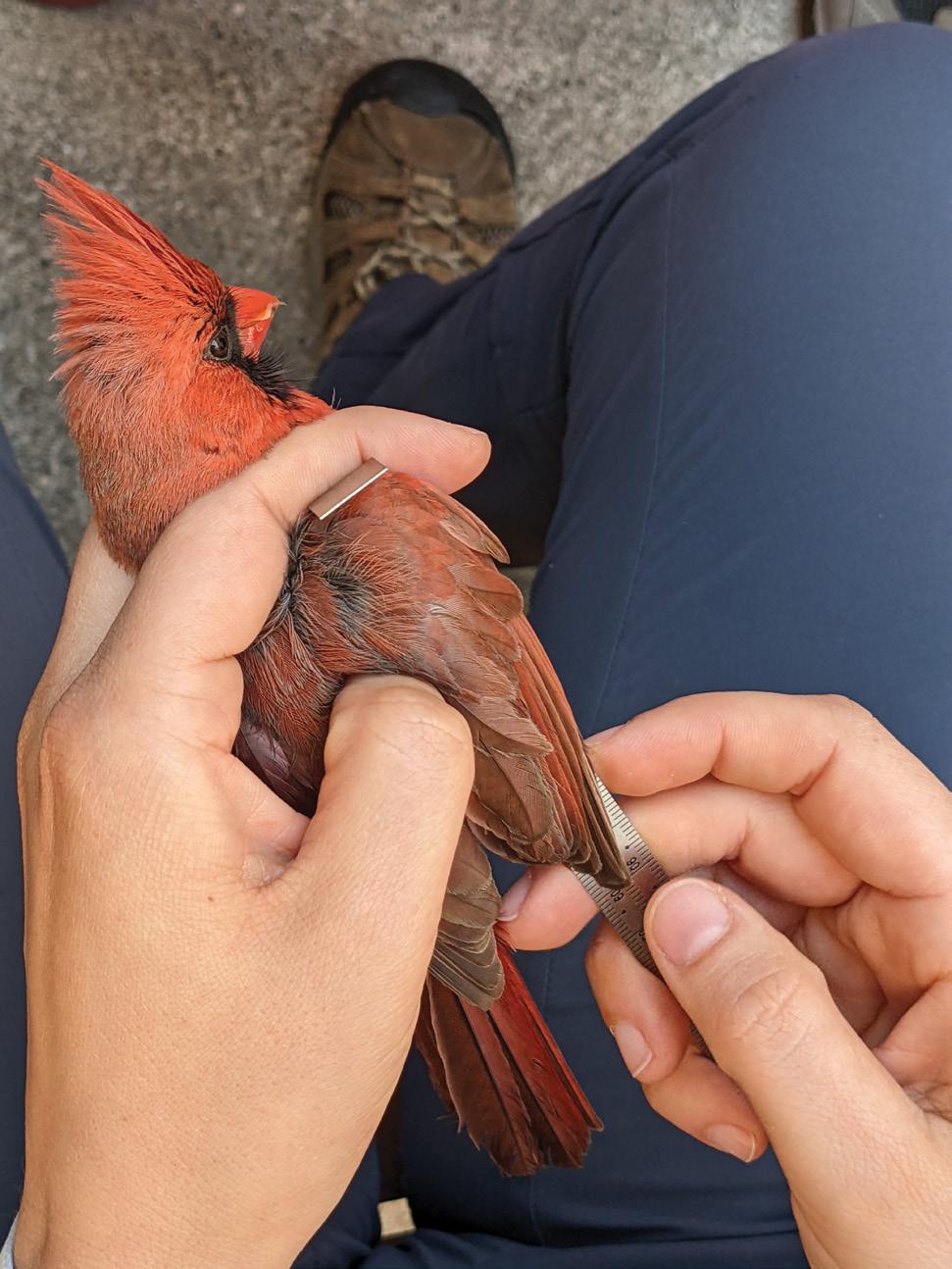
by Shea Conner and Valerie Bustamante Johnson
They say everything is bigger in Texas, and the state’s economy is a towering giant by any measure. Last valued at $2.4 trillion in 2022, Texas alone would comprise the 8th largest economy in the world, and upcoming evaluations have the Lone Star State passing France for the No. 7 spot.
C’est la vie.
Population growth has certainly played a factor in the state’s economic dominance. Texas gained over 473,000 new citizens in 2023, accounting for 30% of the nation’s overall population growth. The Texas Demographic Center at UTSA projects that the state’s total population could very well exceed 40 million by the year 2040. People aren’t the only ones flocking to the state, though. Companies are, too. This summer, Texas hit its largest labor force mark ever at more than 15.3 million jobs, topping every other state in the nation.
There are myriad reasons why Texas is such an appealing business destination, but one rises above all — the state is leading the world in many forward-looking industries.
“With the best business climate in America, Texas is a magnet for attracting and retaining innovative entrepreneurs and industry leaders seeking the freedom to grow their businesses and the opportunity for their employees to succeed,” Gov. Greg Abbott said in a press release this summer. “With a skilled and growing workforce and continuing strategic investments in education, workforce development and critical infrastructure expansion, we are building the greatest economy in the nation and a bigger, better Texas for decades to come.”
Colleges and universities — and especially the state’s 11 Carnegie R1 research institutions, including UTSA — are essential to fostering the talent that will propel Texas’ strongest industries forward.
Home to thousands of innovative life science and research firms, as well as many major medical centers, Texas is at the forefront of discovery in biotechnology, cancer research, brain health and precision medicine. Already a colossus in oil and gas production, the state’s renewable energy potential is just as vast, thanks to its abundant wind, solar and biomass resources. Texas leads the way in data infrastructure, financial services and information security.
Additionally, Texas is one of the world’s most vital cradles for engineers and cybersecurity experts because of its enormous presence in national security, aerospace, aviation, transportation and defense. It is home to powerhouse players like NASA, SpaceX, Blue Origin, American and Southwest Airlines, plus 15 active military bases. It’s also an international trading hub with 29 ports of entry and a freight mammoth with more highway lanes and railroads than any other state. Laredo, just down the road from San Antonio, is the largest port in the U.S., and the
state’s logistics market is expected to swell by more than $22 billion over the next five years.
San Antonio’s physical location and strategic positioning at the nexus of all of this growth and innovation are the pair of aces in Jenna Saucedo-Herrera’s hand. As the president and CEO of greater:SATX Regional Economic Partnership, the lead economic development organization for the San Antonio region, Saucedo-Herrera’s laserfocused mission is to create jobs. She does everything in her power to grow and retain the jobs offered by the city’s top employers like H-E-B, USAA and Valero. Just as importantly, she travels around the globe to recruit high-quality employers to establish operations in the San Antonio region. In that effort, greater:SATX has exceeded all expectations. Through the first half of 2024, the organization announced $1 billion in new investments and has already surpassed its 2021-2025 goal of $5 billion.
OUR UNIVERSITY IS SITUATED IN THE SEVENTH LARGEST AND ONE OF THE FASTEST GROWING CITIES IN THE U.S. WE ARE AT THE CROSSROADS OF THE AMERICAS, AND OUR EDUCATIONAL EFFORTS ALIGN WITH OUR BUSINESSES HERE IN TEXAS.
Taylor Eighmy | UTSA President
“San Antonio is anchoring what I believe will be one of the most dynamic employment corridors in the world within the next 20 years, which stretches north to Austin and south to Monterrey, Mexico,” Saucedo-Herrera says.
One factor that’s long kept San Antonio trailing other major metros, Saucedo-Herrera says, is educational attainment. The city has never had an educated workforce large enough to support corporate headquarters with tens of thousands of employees. But that’s changing in a big way — and UTSA is leading that charge with intentional focus and a mission to not simply produce more talent but more skilled talent.
“Our university is situated in the seventh largest and one of the fastest growing cities in the U.S,” UTSA President Taylor Eighmy says. “We are at the crossroads of the Americas, and our educational efforts align with our businesses here in Texas.”
“Educational outcomes are core to our mission to deliver jobs,” Saucedo-Herrera adds, “and UTSA is at the helm helping us articulate that strategy.”
Saucedo-Herrera has shared many conference rooms with UTSA President Taylor Eighmy, who serves on the greater:SATX executive committee alongside business leaders from across San Antonio. When she thinks back on their working relationship, one moment always stands out. During a workforce development meeting with the area’s top employers and university leaders, Eighmy said something that most folks in higher education might find peculiar. Many of them would say that the students at any university are their “customers” or “clients.” Eighmy, however, told everyone in the room that UTSA’s “customers” were their future employers and that UTSA’s graduates will help ensure their prosperity.
“That was the most brilliantly simple explanation that I’ve ever heard
from somebody who understands the complexities of workforce and talent readiness,” she says. “If we truly want to drive economic and social mobility in San Antonio, then we have to think in terms of what employers need in the present and future, and we need to prepare students for that level of success.”
To that end, UTSA has crafted its most renowned degree programs to meet the target industries of Texas. For example, graduates earning degrees in cybersecurity, computer science and data science are filling a dire tech and cyber talent gap. San Pedro I — home of UTSA’s School of Data Science, National Security Collaboration Center and the Cybersecurity Manufacturing Innovation Institute — puts students in the heart of the city’s Tech District while preparing them for much-needed positions in the
local workforce. With the formation of UTSA’s newest college dedicated to AI, computing, cybersecurity and data science, students will have a leg up in the field of advanced technologies.
Texas Secretary of State Jane Nelson has seen firsthand how such thoughtful innovations and strategic efforts at colleges and universities have spurred Texas to previously unmatched heights.
"As I meet with people from around the world, encouraging investment in the Lone Star State, one thing that continually sets Texas apart is investment in our workforce. This is especially true when it comes to technology. UTSA's early commitment to cybersecurity education is helping to make Texas a global economic leader and build a workforce ready for 21st Century jobs," Nelson says.
That commitment extends far beyond cybersecurity. UTSA’s biology, psychology, kinesiology and biomedical engineering graduates are making big contributions to San Antonio’s growing bioscience and health care sectors. Roadrunners with degrees in finance, marketing and management are finding success among San Antonio’s high concentration of financial service and insurance providers. And UTSA degreeholders in mechanical engineering, civil engineering and construction science are helping keep the region’s countless manufacturing, infrastructure and transportation efforts running smoothly. Saucedo-Herrera says this has been a game-changer in her role.
“The workforce pipeline for the next 10 to 50 years is extremely important for these organizations as they’re deciding on locations for their operations,” she explains. “We have a demand, and UTSA is really stepping up to be relevant to key employers and create that supply for us.”
More than 7,000 Roadrunners graduate and enter the workforce each year and a whopping 90% of them stay
in Texas. But it’s not just about quantity. It’s about quality. Roadrunner alumni are earning reputations as thinkers, as doers, as fixers and as game-changers. The key characteristic that sets UTSA graduates apart as they enter the workforce can be summed up in one word: versatility. Employers throughout the state are seeking Roadrunners because they have relevant experience and an aptitude for collaboration before they graduate.
That may be because UTSA has made significant investments in its Classroom to Career initiative in recent years, ensuring that students can immerse themselves in real-world learning opportunities from their very first day on campus. By 2028, the university is on track to have at least 75% of undergraduate students participating in career-engaged learning experiences — from internships and career training to service learning and research. This gives Roadrunners the opportunity to not only further their own professional development through a more authentic way of learning, but also gain valuable experiences
that will make them more appealing to employers and ready to make an immediate impact in their careers. UTSA also fosters strong relationships with leading corporations and innovative small businesses to connect thousands of students to internships, part-time and fulltime opportunities with employers throughout the Lone Star State.
Nearly 37,000 employers are approved to recruit UTSA students. In fact, 363 of the Fortune 500 companies have actively recruited Roadrunner talent at UTSA career expos and events or through the Handshake app accessible to all of the university’s students and alumni.
Sombrilla Magazine recently connected with four UTSA alumni and their employers to learn about their paths to prosperity. Turn the page to read their stories.
If we truly want to drive economic and social mobility in San Antonio, THEN WE HAVE TO THINK IN TERMS OF WHAT EMPLOYERS NEED IN THE PRESENT AND FUTURE, AND WE NEED TO PREPARE STUDENTS FOR THAT LEVEL OF SUCCESS.
Jenna Saucedo-Herrera | President and CEO, greater:SATX Regional Ecomomic Partnership
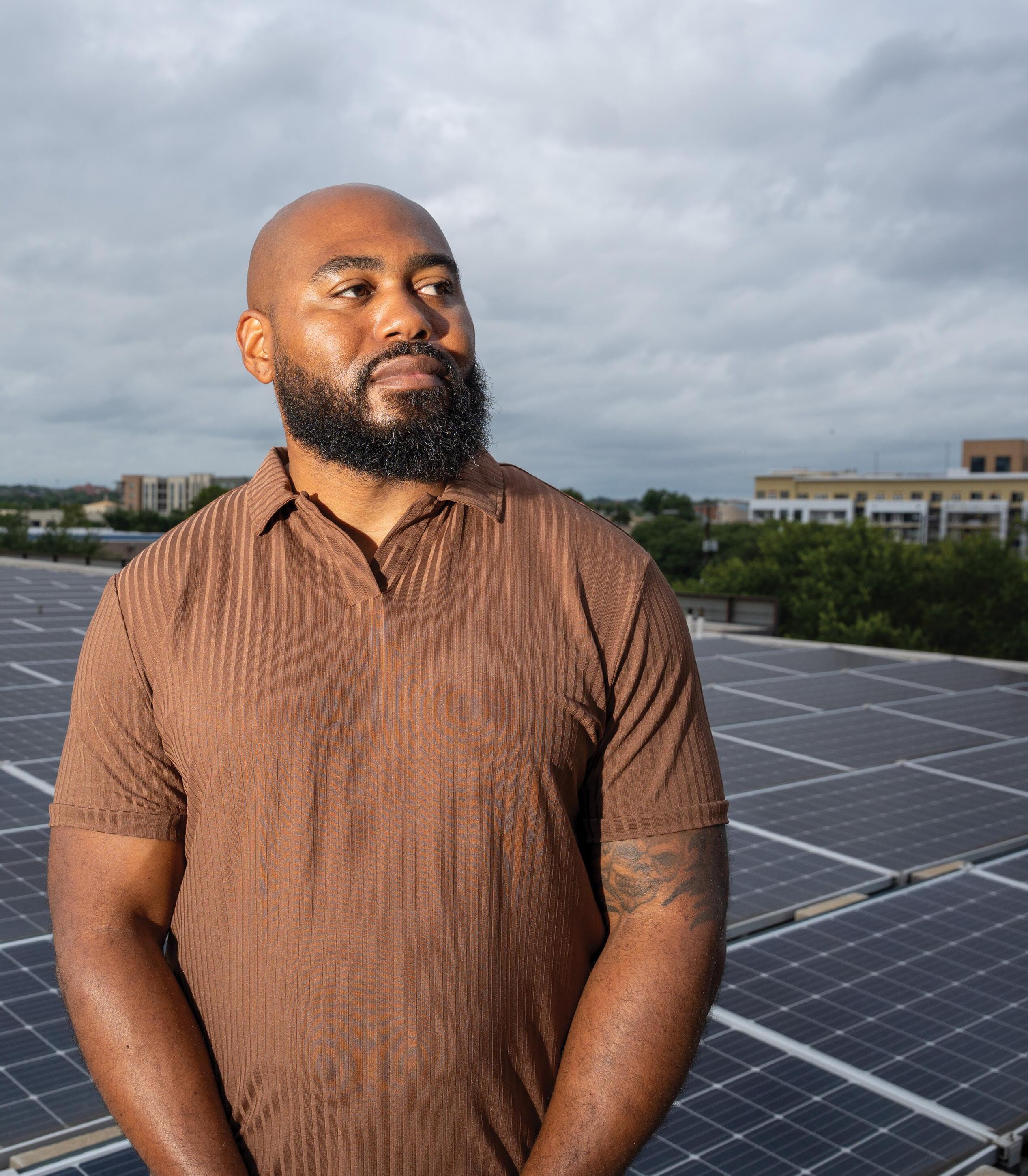
In recent years, hackers have become increasingly capable of attacking the world’s top companies. According to Cybersecurity Ventures, losses from cybercrime are projected to hit a massive annual cost of $10.5 trillion by 2025. So, it’s more important now than ever that cybersecurity graduates enter the workforce with a wealth of business and data knowledge to complement their technical acumen.
Over the last two decades, UTSA has been heralded as a global leader in producing accomplished cybersecurity professionals. In 2014, the university’s cybersecurity degree program was first deemed the best in the nation. UTSA is one of only a handful of universities to hold all three National Center of Excellence designations from the National Security Agency and Department of Homeland Security. In 2017, UTSA made history by becoming the first university to offer a fully online cyber degree, a program that has just been named one of the nation’s five best by Forbes.
Look beyond those accolades, and you’ll see that students pursuing a B.B.A. in Cyber Security at UTSA are getting an education that’s as broad as it is enduring. Many UTSA cybersecurity alumni are taking their robust skills to Fortune 500 companies like Accenture LLP. With more than 750,000 employees around the world, Accenture specializes in informational technology and consulting services in a number of areas such as cybersecurity, artificial intelligence, and finance and risk management. In the U.S., Accenture Federal Services (AFS), a subsidiary of Accenture LLP, is the nation’s leading federal services company with a focus on defense, national security, health and public safety. Accenture is one of the top 30 employers of UTSA graduates, making them a key industry partner for the university.
“The work we do is important. We’re providing health care for the citizens of this country. We’re helping people with their taxes. There’s a lot that we do that touches everyone’s lives,” says Rachel Neuschaefer, campus and entry-level recruiting lead and senior recruiting manager for AFS.
Neuschaefer notes that because of this service mission, the people brought on board to join AFS must demonstrate several key skills beyond their technical aptitude. Those successful in the highly competitive candidate pool exhibit leadership skills, a passion for innovation, an interest in the public sector, the ability to solve problems and strong communication and interpersonal skills.
AFS is finding these qualities time and time again in UTSA’s students. In fact, 30% of the individuals who join the San Antonio and St. Louis AFS offices are UTSA graduates. Neuschaefer added that AFS had an 81% acceptance rate of UTSA students.
“I think we’ve worked really hard to build our brand and our name recognition amongst UTSA students,” she says.
It was at a UTSA career fair last fall where Jamal Hasty ’23 checked off all the qualities Accenture was looking for in an employee. Hasty was first hired by the firm to serve as a technology specialist for prepackage applications, but AFS quickly realized that he would flourish as a cyber program analyst, and he was given a promotion. In his new role, he works in risk compliance and encryption for his client, the U.S. Department of Energy.
“It’s pretty awesome getting to see how the government works from an energy standpoint and being part of making sure that things are protected from the outside,” says Hasty.
Hasty previously graduated from UTSA with a teaching degree in 2004, and for the next 19 years, he taught third- and fourth-graders for the Northside ISD in San Antonio. But in 2019, while chaperoning his elementary school’s student council at a UTSA STEM event, he found himself captivated by a cybersecurity presentation. That newfound interest never wavered.
“It kind of planted a seed in my head,” he says. “It made me think that maybe I should give cybersecurity a try.”
Over the next two years, Hasty took cybersecurity classes at Northwest Vista College before enrolling in the UTSA Online degree program in the summer of 2021 to pursue a B.B.A. in Cyber Security. Not only did Hasty excel at his coursework, but he was involved in several beneficial programs. He served as the secretary for the UTSA Online Cyber Security Alliance for two years and interned as a cybersecurity analyst for B.E.A.T. LLC, a small San Antonio tech company that gave him the opportunity to apply the skills he’d developed at UTSA in a real-life setting.
IT’S PRETTY AWESOME GETTING TO SEE HOW THE GOVERNMENT WORKS FROM AN ENERGY STANDPOINT AND BEING PART OF MAKING SURE THAT THINGS ARE PROTECTED FROM THE OUTSIDE.
He takes the most pride, however, in the work he did in the Najim Strategist program, which is part of UTSA’s Najim Center for Innovation and Career Advancement. The program gives UTSA students the opportunity to participate in team-based projects that create real solutions to issues facing San Antonio businesses. He worked with students from various disciplines to help The Pearl increase its employee retention rate and make more efficient uses of technology. And during his second experience in the program, he was part of a team that developed strategies to recruit more women and employees of color to positions at Union Pacific. Overall, he feels the program was a fitting precursor to his new profession.
“With the Najim Strategist projects, we were all coming from different backgrounds — whether it was cybersecurity, finance or software engineering. Even though we were all bringing something different to the table, we were able to work together toward the same goal.”
With the support of his professors, the Najim Center and the UTSA University Career Center, Hasty has launched his new career and feels assured that he’s found his calling.
“It’s a great feeling,” Hasty says. “I can see myself doing this for the next 20 to 30 years.”
The vibrance of the Lone Star State’s economy has been attracting huge numbers of people migrating from other states and countries which, in and of itself, has created a huge demand for new housing and road construction projects. A recent report by the Associated General Contractors of America shows that construction jobs are not only on the rise nationwide, but in a big way in Texas. The state added 21,000 construction jobs in 2023 alone, and the industry shows no signs of slowing in the San Antonio region where population growth is currently the highest in the U.S.
With expansion comes evolution. A vastly greater number of skilled engineers and construction science professionals with college degrees are necessary to lead the way in this boom era of construction projects. Maksim Golubovskiy, project manager for Webber, has seen that transformation firsthand. He says the construction management workforce has seen a surge of recent college graduates and employees in their 30s and 40s.
“I’ve been with Webber for about 8½ years, and even in the time that I’ve been here, I have seen a significant shift. When I started here, the ages were a bit higher. Most of my superiors were in their mid-50s, but that has very rapidly changed. I think that’s in part to the expansion of the industry,” Golubovskiy says. “That’s been a really positive shift because there’s a lot of energy and a lot of enthusiasm for the industry.”
MY OPPORTUNITIES ARE ENDLESS, AND I THINK MY FUTURE IS VERY BRIGHT. THAT MAKES ME REALLY HAPPY BECAUSE I’VE BEEN WANTING THAT FOR A LONG TIME.
Aside from just a shift in age groups, the number of women, while still the minority, is slowly growing in the male-dominated construction field. In the U.S., nearly 1.2 million women now work in construction and make up 9.9% of the industry, according to the National Association of Women in Construction. However, the state with the largest number of women working in construction is Texas, which boasted more than 137,000 female construction workers in its last count in 2022. For reference, Golubovskiy says half of the engineers on the project he leads are women.
“It’s been great to see that. It’s more difficult as a woman to break into the field,” he says. “Whenever I have female employees, I feel there’s never a question if they’re really interested in construction.”
UTSA has recognized that to keep up in this growing, evolving industry, students need to be passionate about construction and skilled enough to briskly adapt. Bonnie Lee ’23 is a prime example of the aptitude and determination that Webber values. Lee, a New
Braunfels native, joined Webber, a Ferrovial company, earlier this year as a field engineer for bridge, transit and other heavy civil projects after participating in the company’s internship program.
“I’m excited that I found my place, and I’m excited to see where I go. My opportunities are endless and I think my future is very bright. That makes me really happy because I’ve been wanting that for a long time,” admits Lee, who earned her first college degree in marketing from Texas Tech University in 2013.
After what Lee describes as an aimless handful of years, she felt a renewed push to go back to school and earn another degree on a completely different career track. She enrolled at UTSA with plans to follow in her father’s footsteps by pursuing a degree in civil engineering before pivoting to the construction science and management major, which she felt would be a better fit for her interests. She was also excited — if not a bit intimidated — by the fact that she would have to complete an internship as part of her engineering studies at UTSA.
“When I got my first degree, we didn’t have to do an internship,” Lee says. “Now, after my time at UTSA, I don’t see why any college wouldn’t have you do an internship because I think it’s extremely helpful. It’s kind of like a little gateway to the professional world.”
Lee landed an internship with Webber, learning the very skills that she’s applying on the job today. She was assigned to a road construction project on I-35 near San Marcos where Webber crews were rebuilding bridges, removing and replacing concrete paving and making improvements to frontage roads and drainage.
At the end of the internship, Lee was among a group of 75 interns that paid a visit to Webber’s corporate office in Houston to give presentations about their experiences to Webber president and CEO José Carlos Esteban and other senior managers. After the presentations, she approached Mitch Beckman, the chief human resources officer, to introduce herself. He was already very familiar with her work.
She recounts that he shook her hand and said, “Well, how would you feel about working for us?” Then she responded, “I would love to!” to which he replied, “Well, I’ve heard great things about you, and you’re going to have an offer letter in your mail in two weeks.”
Lee couldn’t help but feel flattered and touched. “At that moment, I thought that even if other companies wanted me to go work for them, Webber really appreciated me and what I did,” she says. “I felt like I belonged here.”
Being a field engineer for Webber has come with challenges ranging from thorny to complex, but Lee has proven to be quite adept at tackling them all.
“Bonnie has done an excellent job of facing challenges headon. Even if it’s something brand new that she’s never dealt with,” Golubovskiy says. “One thing that’s really important in this field is there is so much to learn all the time. You must have the personal drive to go out and try to find the answer yourself before coming to your manager and peers. Bonnie is really good at doing that.”
“That’s a part of what we learned at UTSA is to problem-solve,” Lee adds. “Every day there is a challenge, and you have to figure it out, whether that’s by yourself or with your teammates. We’re all really good at helping each other.”
Bonnie Lee ’23 finds a fresh start in an industry of infrastructure that’s rapidly evolving

As freight transportation grows, mechanical engineers like Taylor Richard ’21 will be more and more vital

NO STOPPING THIS TRAIN
The mere thought of locomotives chugging along the plains and canyons of Texas may spawn nostalgia for the historic days of the Wild West, but believe it or not, railroads will play a substantial role in the state’s future. As a hub of international trade, Texas claims more active stretches of railroad than any other state and the largest number of railroad employees in the nation. Railroad operators will continue to be a key thrust of the state’s expanding freight and logistics market, which also includes an extensive network of warehouses, manufacturing plants, roads and ports.
No one operates more miles of railroad in Texas than Union Pacific. For more than 20 years, UTSA and Union Pacific have held a close partnership. Union Pacific has made several investments in the success of UTSA’s students with the hope of fueling its workforce pipeline, from sponsoring interview rooms on campus to attending UTSA career fairs to launching the Iris Photo Booth, which provides professional headshots to the Roadrunner community.
“Union Pacific partners with universities to provide great students with great careers. Partnerships help cultivate that pipeline of highly qualified students who come in understanding our business and the importance of their role here at Union Pacific and how it impacts the U.S.,” says Melissa Price, senior manager of talent acquisition and HR technology at Union Pacific.
“We continue to invest and recruit at UTSA because of that high caliber of students we see,” Price adds. “There’s a passion and a drive for success for themselves, and that’s really exciting to see with the incoming workforce.”
When visiting UTSA and other universities to recruit to Union Pacific, Price says they are looking for students who show a high aptitude for learning and a driven ingenuity to improve processes.
“The students who have leadership skills tend to do very well here, whether that’s leading a student club or professional management experience,” Price says. “What I’ve seen with UTSA students is that there’s a good majority of them who work, manage a student club and are active on campus.”
Taylor Richard ’21 is one of those standout UTSA graduates that Price describes. Since joining the company in September 2021, she has served as a locomotive maintenance manager for the freight titan, which operates more than 8,300 trains and 32,000 miles of railroad tracks across the United States. Every day, Richard and her team overhaul locomotives, a mighty task that includes rebuilding engines, repairing generators and making essential piping improvements.
A mechanical engineering graduate, Richard has never been bothered by a little grease between her fingernails. She fondly reminisces about the days when her dad was a master technician for a car dealership and she’d help him tinker with his vintage ’65 Ford Mustang, or when she crafted stage sets and props for high school theater productions. Richard says she was destined to work with her hands.
Looking back, however, her journey to Union Pacific didn’t always feel like destiny. Like many of her fellow college students, she didn’t know where to start on her professional journey. So, she quickly connected with the UTSA University Career Center in the fall
of 2016 and applied to be a student assistant. It wasn’t long before she was working at career fairs and tabling events where she could watch as employers held mock interviews and reviewed résumés.
That knowledge helped her land a mechanical engineering internship with the U.S. Air Force Civilian Service in the summer of 2019. During the internship, she did site and tank inspections, performed building condition assessments alongside engineering technicians and presented solutions to company decision-makers. Richard says it was a rewarding experience because she not only got to work in the field, but she also developed skills in civil engineering and operations management.
When she started looking for jobs in the summer of 2021, she was confident she had the skills to immediately thrive at a transportation franchise like Union Pacific and submitted an application. Richard remembered setting up the Union Pacific table at a UTSA University Career Center event and learning about just how much freight the company moves around the nation. It still fascinates her, so much so that one of her favorite things to do is share little freight facts with others.
“In 2023, we moved something like 1.9 billion units of French fries,” Richard says with a mix of awe and pride. “A lot of things move by rail that most people don’t know about.”
WE CONTINUE TO INVEST AND RECRUIT AT UTSA JUST BECAUSE OF THAT HIGH CALIBER OF STUDENTS WE SEE. THERE’S A PASSION AND A DRIVE FOR SUCCESS FOR THEMSELVES, AND THAT’S REALLY EXCITING TO SEE WITH THE INCOMING WORKFORCE.
Richard has quickly progressed in her three years at Union Pacific, starting as a trainee at the Englewood Shop in Houston before being promoted to the Jenks Shop in North Little Rock, Arkansas, home of North America’s foremost locomotive overhaul facility. There, she has flourished as a leader for the overhaul and modification team and been heralded as a “champion of safety” by her supervisor, Heath Johnson.
“She produces quality results, ensures the team is safe and effective, and takes complete ownership of her responsibilities,” says Johnson, the senior manager of the locomotive facility.
Richard knows that she’s a rare breed in her profession. A demographic overview by Career Explorer states that only 16% of mechanical engineering employees in the American workforce are women, and only 4% are Black. Despite entering a field long dominated by white and Asian males, Richard says she’s felt nothing but respect from her counterparts — and the feeling is mutual.
“I love what I do. I love the people that I work with and the people that work for me,” she says. “They’re just a great group. They really care about the work that they put out.”
One out of every six San Antonians is employed in the biosciences and health care industry, and it’s easy to see why. The Alamo City is one of the nation’s leading hubs in these fields. UTSA, along with UT Health San Antonio, the Texas Biomedical Research Institute and the Southwest Research Institute have all produced talented students and contemporary thinking in the life sciences, engineering and other STEM careers, even teaming up for important research through collaborations like the San Antonio Partnership for Precision Therapeutics. Bexar County is also home to the South Texas Medical Center and global MedTech companies like 3M and Medtronic, in addition to serving as a haven for military medicine.
Needless to say, this hotbed of innovation and expertise has become an appealing destination for many medical device, biologic and pharmaceutical manufacturing companies looking to break through. One of them is Vascular Perfusion Solutions (VPS), which seeks to revolutionize the technology surrounding organ transplants with a hypothermic heart preservation system that can preserve organs and tissue for longer than the current standard-of-care method, ice coolers.
IT WAS SO REWARDING SEEING SOMETHING THAT STARTED AS AN IDEA IN MY HEAD GO FROM A DRAWING TO A WORKING PRODUCT BEING USED.
“As a startup, it has become increasingly important to think about creative ways that we can build our company,” says Rafael Veraza, chief executive officer and president of VPS.
One of those creative avenues the company established was an internship program with UTSA students, which provided the talent VPS needed at an opportune time. VPS’s internships are designed to give the students a hands-on experience where they actually get to do high-level science and research.
“First, we had two interns over the summer, then that grew,” Veraza says. “Because the UTSA students were so creative and talented, we decided that we had to find a way to hire them on full-time.”
Of VPS’s team of 10, three of them are UTSA alumni who started as interns before being hired full-time.
“The students at UTSA have all of the engineering and scientific skills they need, but they also have qualities beyond those skills that are so appealing to us,” says Kristina Andrijauskaite, chief scientific and technology officer. “UTSA students are self-assured and come with such a wide variety of skills, which makes them so valuable to a growing company like ours.”
Isabella Cano ’22 was one of the first Roadrunners at VPS to make the jump from intern to full-time employee. For many of her adolescent years, Cano thought she might become a doctor or a surgeon one day,
but during her sophomore year of high school, she discovered that UTSA had launched a biomedical engineering program and became fascinated with both the university and this cutting-edge area of study.
Cano got involved right away as a freshman at UTSA. In her first year, she met frequently with her mentor, biomedical engineering professor Laura Gaviria, to explore what the vast field of biomedical engineering had to offer. She also attended events and career fairs organized by the Student Success Center at the Margie and Bill Klesse College of Engineering and Integrated Design, where she would learn about employers, local biomed ventures and STEM nonprofits.
“I made it my mission my freshman year going forward to always attend the events hosted by the university to network, even if I wasn’t trying to get a job out of it,” Cano says.
For three years, Cano participated in Quality of Life Plus (QL+), a program that challenges college students to create innovative technology strategies to improve the quality of life for injured veterans and first responders. She led or contributed to many QL+ projects to create medical device solutions for the San Antonio community. She then continued to assist veterans during her first internship, where she designed medical devices for Central Texas Veterans Affairs. Here, Cano designed a “cell stretching” device using 3D software that allowed researchers to more closely analyze cells. More importantly, she expanded her knowledge of systolic heart disease, learned how to analyze echocardiograms and found herself enamored with the mechanisms of the heart.
This knowledge would come in handy during an internship at VPS, where Cano parlayed those previously-honed skills to further develop heart transplant technologies. An unpaid internship turned into a paid internship with more responsibilities, which then turned into a full-time position as a research engineer after she graduated from UTSA in 2022.
“Isabella is such an important part of our team,” Andrijauskaite says. “She is willing to jump into different tasks and take on challenges that are even outside of her area of expertise. She has all of the right skills. She can do the science that we need, but she can also speak confidently to external audiences.”
As a research engineer, Cano carries out viability and functional tests on the device with animal hearts — and sometimes even human hearts — that are donated for research. She runs test simulations to evaluate the system's performance for parameters, such as flow and pressure, as the company gears up for the device’s FDA submission. Cano has also designed and manufactured systems that complement the device, from custom-made cooling packs to the pivotal cardiac cannula equipment that attaches to the heart.
“It was so rewarding seeing something that started as an idea in my head go from a drawing to a working product being used,” she says.
In addition to her research, Cano is often leading the charge for the VPS social media and marketing initiatives. She’s even organizing the company’s booths and outreach efforts at national conferences. It’s hard, multi-faceted work. And yet, Cano attests, it’s worth it to be working toward something so meaningful.
“I would have never thought I would have been doing some of the things that I’m doing now,” Cano says. S
Isabella Cano ’22 is helping her company revolutionize organ transplant technology
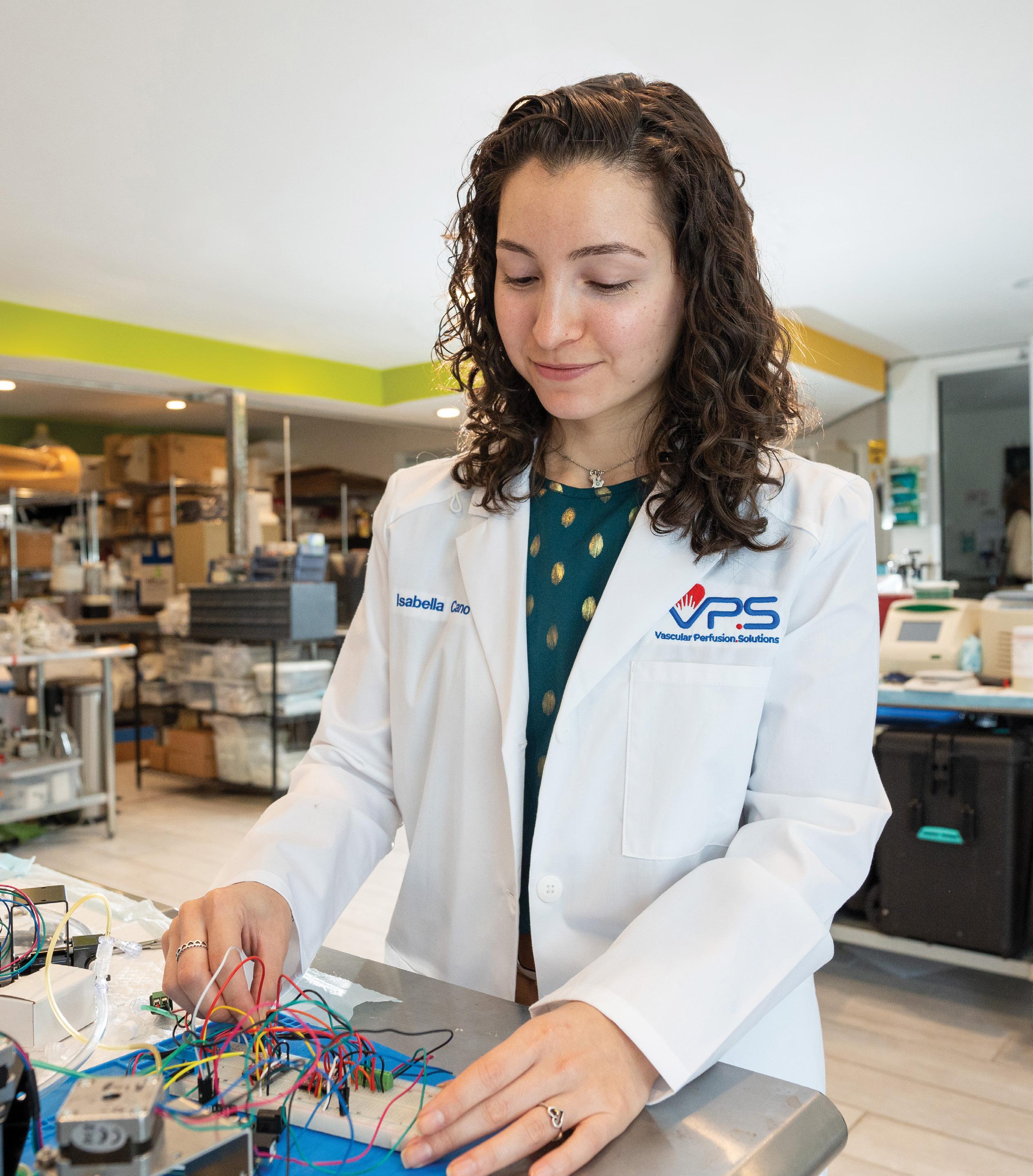

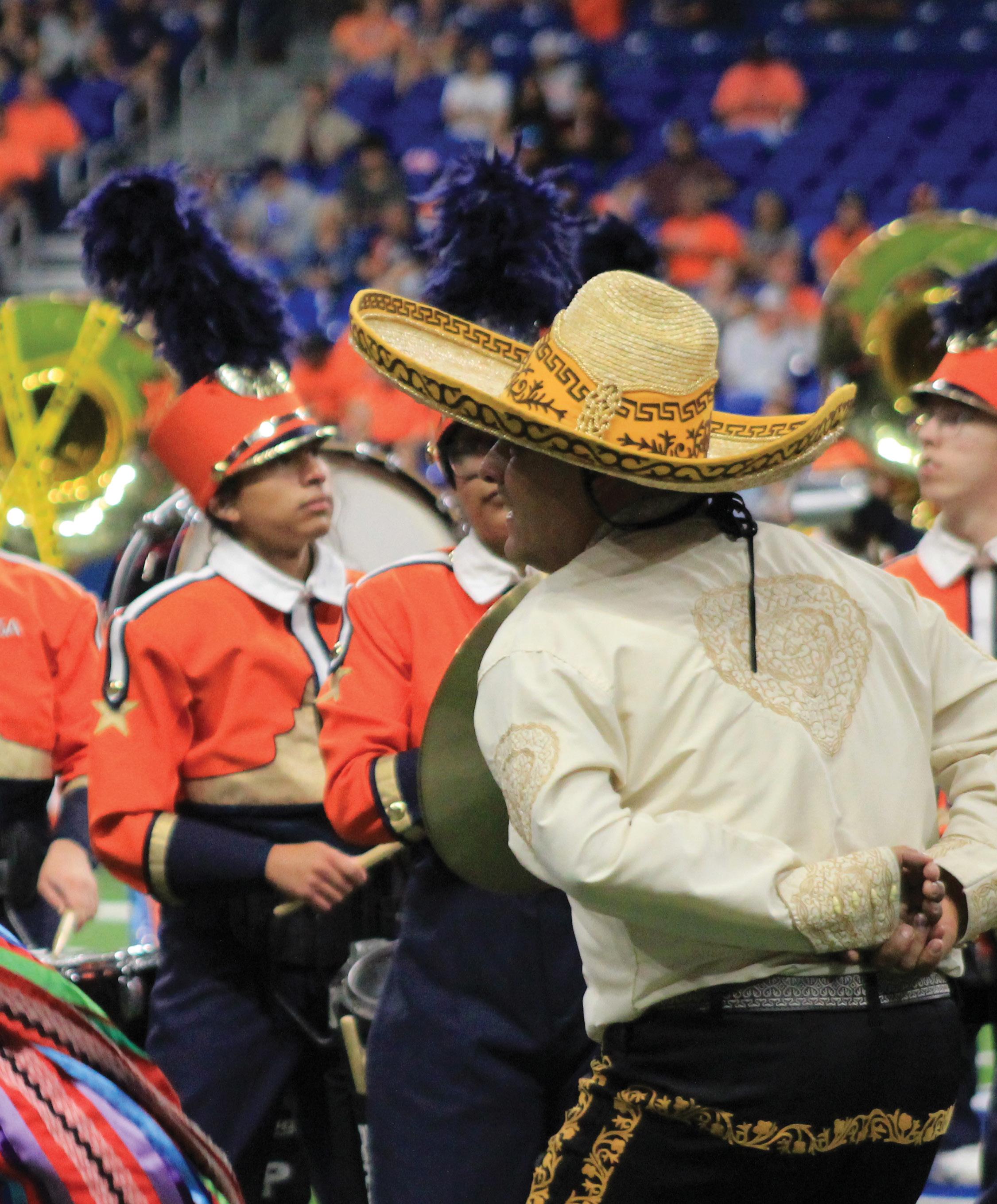
A young woman swings her vibrantly colored Jalisco style dress as she dances with her partner, who is dressed in traditional charro attire. The pair brought the traditional moves and music of ballet folklórico to the Alamodome field alongside their dance company, Ballet Folklórico Sol de San Antonio and UTSA Mariachi Los Paisanos.
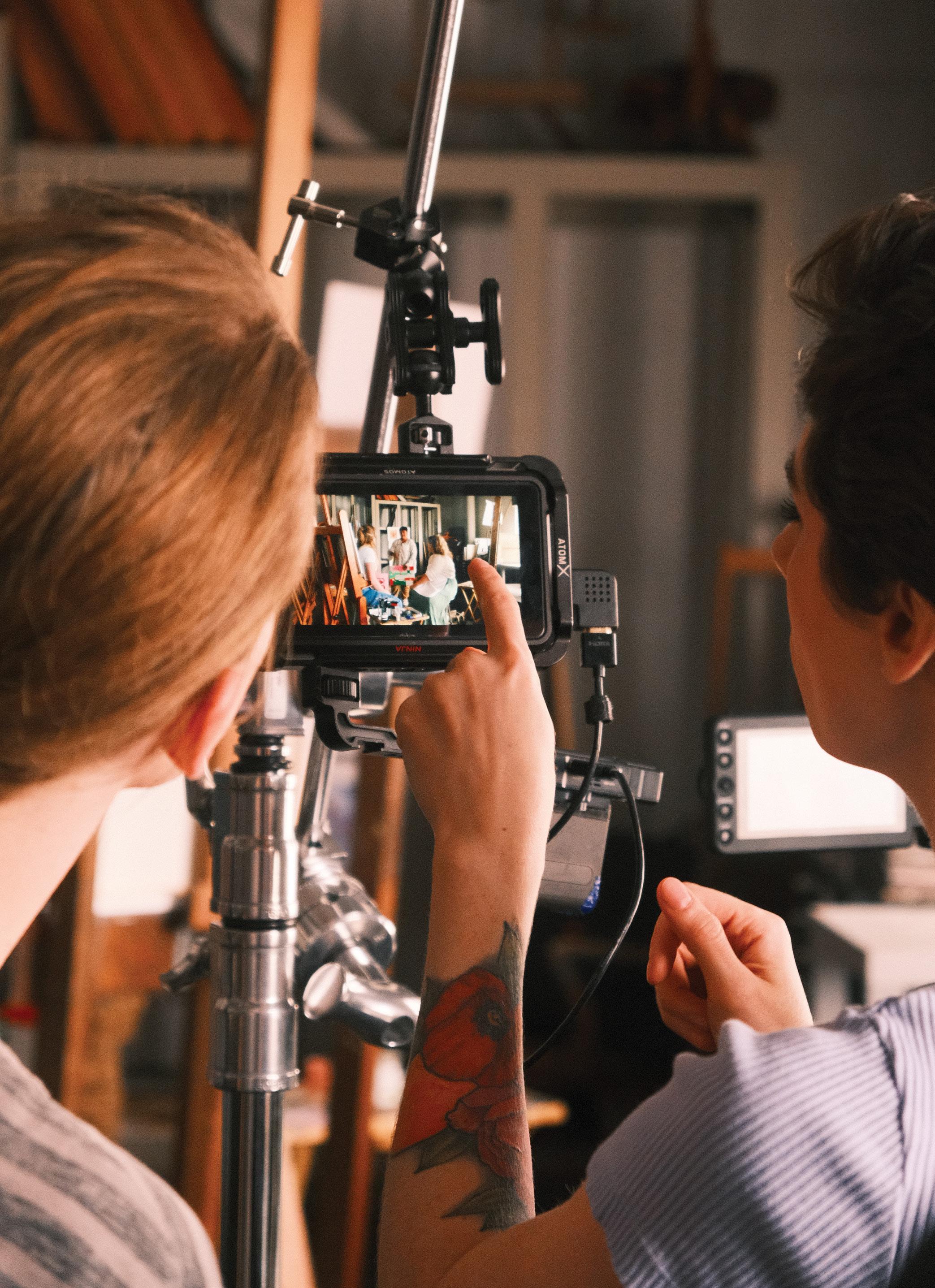
UTSA’s Film and Media Studies program is blazing trails in San Antonio and Hollywood while presenting students with exceptional career opportunities
BY SHEA CONNER
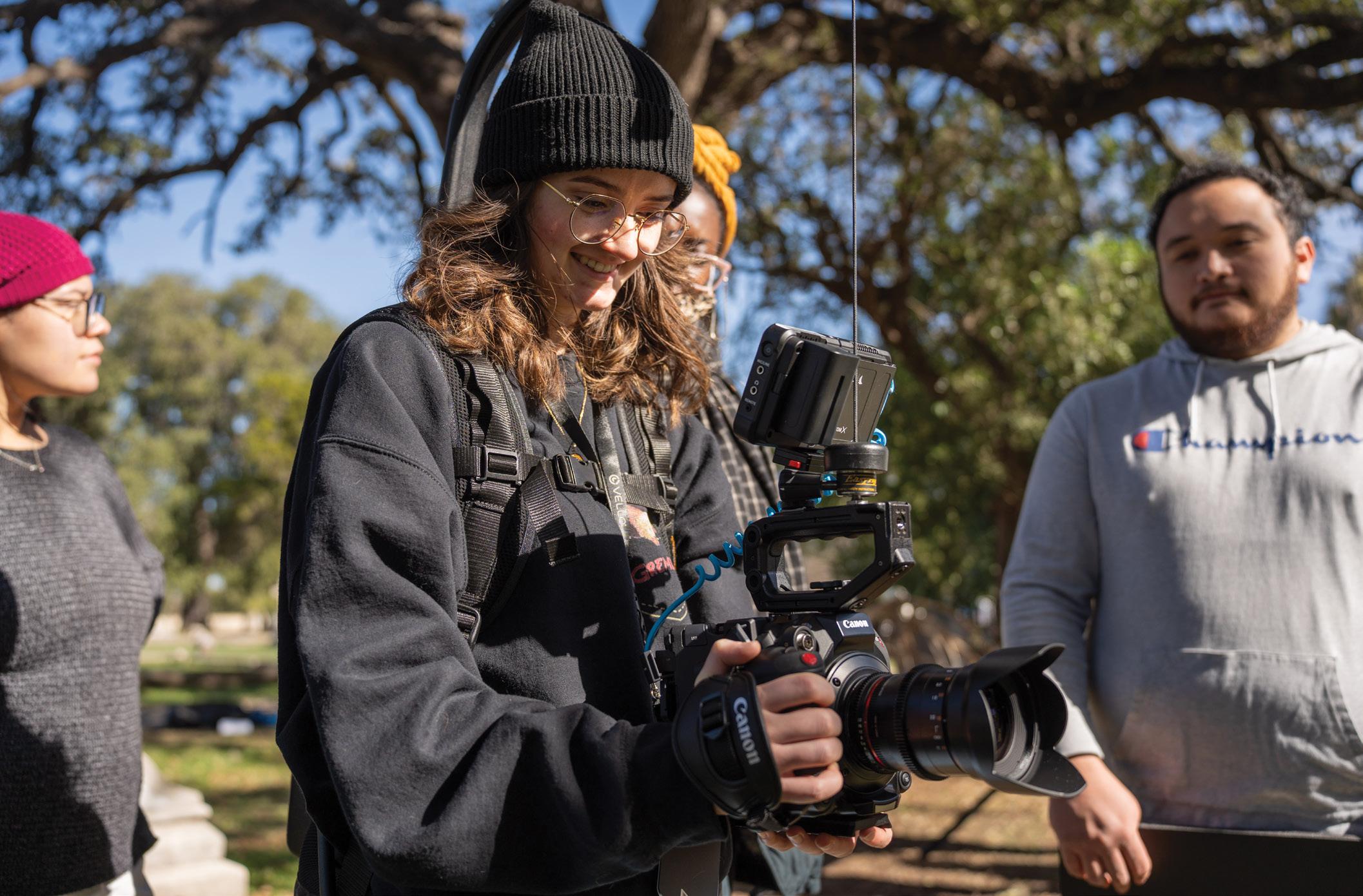
WWhen UTSA Film and Media Studies hosted its very first student movie premiere in May 2023 at the Santikos Palladium, dozens of people had to be turned away. Every seat in the Palladium’s largest auditorium was occupied 10 minutes before the event: some by the Film and Media program’s students and their guests but also by many South and Central Texans who were eager to see what this very young program was all about. Glenn Martinez, dean of the UTSA College of Liberal and Fine Arts, provided opening remarks memorializing the importance of the night. “There is an effort to make a Latino Hollywood here in San Antonio,” Martinez said. And the UTSA students looking back at him would be key drivers in that effort for the city to expand its film and entertainment scene.
Martinez wasn’t simply setting out to inspire the Roadrunners in the Santikos seats. He was conveying a widely held hope that UTSA students would help replenish the talent pipeline in the 210. Kimberly LeBlanc knows about the city’s talent gap all too well. As the San Antonio Film Commissioner, LeBlanc helps connect all sorts of media productions with filming locations, permits, funding and crew and vendor support on a daily basis.
“What we have in San Antonio is a little bit of a chicken-or-theegg situation where we need more large-scale projects to come and realize what an incredible filming destination San Antonio is. But at the same time, they need the film crew and vendor support to be more robust to make those commitments,” LeBlanc explains. “So, the continued growth and development of UTSA’s film program is a huge piece of the puzzle.”
UTSA film and media student Ireland Robinson operates the camera during the Directors Workshop in January. In the months since, she has wrapped up work on the eccentric comedy “Ladies Love Salads,” which is currently seeking funding for a major festival run, and a documentary about the university’s On-Corps Veterans Band.
UTSA’s Film and Media program has really come out of the gate like a rocket.
San Antonio has recently become more film-friendly than ever before, and the Texas Governor’s office is set on ramping up more film and TV activity in the Lone Star State. Two bills signed by the Texas Legislature in May 2023 raised the statewide filming grant to an all-time high of $200 million, which was a significant jump from the $45 million earmarked in the previous session. San Antonio additionally boasts the most competitive film incentive in the state, offering projects in the eight-county area around the Alamo City 7.5% back on their spending. Needless to say, an influx of talented and well-educated UTSA film students are arriving on the scene at a highly opportune time.
“UTSA’s Film and Media program has really come right out of the gate like a rocket,” LeBlanc says. “It’s actually been one of my favorite pieces of news to share with other folks in the industry here in Texas and out of market when they ask, ‘What’s going on?’ or ‘What’s new in San Antonio?’ or ‘What should I be paying attention to?’ It’s just such a joy to talk about this program.”
The word is certainly out. In August 2023, the UTSA University Career Center hosted a roadshow in Los Angeles for members of the Hispanic Serving Institutions (HSI) Career Collaborative, a consortium of 14 HSIs across the country with Latino-majority student populations. While there, senior leaders from the UTSA University Career Center networked with employers such as Netflix, Google, Riot Games and the Academy of Motion Picture Arts and Sciences. The hot topic was UTSA’s burgeoning Film and Media Studies program.
Throughout the trip, potential employers were introduced to a group of UTSA student filmmakers. UTSA’s delegation that visited Netflix’s L.A. headquarters on Sunset Boulevard included Paul Ardoin, director of UTSA Film and Media Studies; Guillermina Zabala Suárez, awardwinning documentary filmmaker and professor in practice at UTSA; and Sean Kelly, director of the new UTSA Interdisciplinary School of Engagement.
“We’re one of only three Tier One universities in the entire country with a film program that is majority Hispanic,” Ardoin says, “so we’re really well-positioned to help diversify the pipeline and the kinds of stories that are being told.”
Ardoin adds that several major players in the entertainment industry — from Netflix to Disney — have expressed interest in UTSA’s momentum as they seek new professionals and interns.
In November, early talent recruiters Kristina Angeles and Gaby Flores-Sanchez of Warner Bros. Discovery (WBD) embarked on their first-ever trip to Texas to spend a day at the UTSA Main Campus with students and faculty from the Film and Media Studies program. They introduced a packed classroom to WBD’s internship program and provided them with tips to bolster their applications and interview skills before learning more about the students and answering their questions.
“We were both really impressed,” Angeles says. “It was just really nice to see how engaged and passionate these students are.”
We’re one of only three Tier One universities in the entire country with a film program that is majority Hispanic, so we’re really wellpositioned to help diversify the pipeline and the kinds of stories that are being told.
PAUL ARDOIN DIRECTOR OF UTSA FILM AND MEDIA STUDIES

From Hollywood to San Antonio, there has never been a higher demand for high-quality video content. Ardoin could rattle off an endless list of folks who have reached out to him seeking video support from UTSA film students and alumni, whether it was the Alamo Bowl needing additional hands, transformer companies and police departments wanting to create new recruitment videos or the National Parks Service developing multimedia content to increase Hispanic engagement at their parks.
With this need in mind, UTSA has taken a practical approach toward Film and Media Studies that balances a traditional cinema education — think film history, culture and theory — with hands-on learning experiences in editing, screenwriting, photography, documentary filmmaking and digital media production.
“Rather than chase the next Hollywood blockbuster, which most film schools of my generation would have done,” Kelly says,
“we’re now talking about the 3-minute video being more likely to be consumed.”
“From our perspective, these students are not just filmmakers. They’re content creators,” Ardoin adds. “And everyone needs content, and everyone needs somebody who makes what goes on their social media feeds and what supports their marketing and advertising efforts. This is really something that applies to any modern industry.”
UTSA’s versatile, career-ready approach has already proven fruitful for alumni like Kaitlyn Rosas ’22. While studying both digital communication and film and media at UTSA, she was able to land an internship at Santikos creating highlight videos that ran before the movies, such as a project she did promoting the community organization Child Advocates of San Antonio (CASA). She was able to convert that internship into a full-time position crafting meaningful content as a digital communication specialist for

Gonzaba Medical Group, where she does video, web and graphic design to advance its mission to positively change the quality and access to medical care in San Antonio.
“We’re preparing young filmmakers to not only be ready to work in the industry, but to give them the tools to amplify their voices and create stories that are going to be impactful,” Zabala Suárez says.
Such a message has resonated deeply with Nicolas Rodriguez ’23, a Brackenridge High School graduate who earned his associate’s degree at San Antonio College before attending UTSA. He says the university’s concerted effort to build a film program the right way is deeply meaningful to him.
“I’ve grown up here my entire life and I’ve always seen San Antonio get skipped for most things involving film, media and storytelling,” Rodriguez says. “So, it’s refreshing to see how many filmmakers and companies are reaching out to us, listening to us and are willing to take a chance on us.”
It’s refreshing to see how many filmmakers and companies are reaching out to us, listening to us and are willing to take a chance on us.
NICOLAS RODRIGUEZ ‘23

Actor and mentor Jesse Borrego discusses a scene with director and UTSA alumnus Nicolas Rodriguez ’23 during the filming of “The Compass,” a collaborative film that was the result of the UTSA Directors Workshop.
On a January morning in a historic cemetery, Rodriguez found himself face to face with one of those notable people willing to take a chance on UTSA’s film students as he directed veteran San Antonio actor Jesse Borrego through a scene in between the rows of centuries-old tombstones. Rodriguez was the first of a handful of student directors that Borrego, who’s notably appeared in “Fame,” “24” and “Dexter,” worked with over the course of 48 hours.
Borrego is one of several experienced film professionals who participated in the UTSA Directors Workshop, a three-day event where students from UTSA, the University of the Incarnate Word, San Antonio College, Northwest Vista College and SAY Sí learned firsthand about the production process while creating a short film called “The Compass.” The Directors Workshop was the latest in a series of UTSA Film and Media events connecting local students with notable names. In 2023, UTSA hosted the Screenwriters Spring Break in which students learned from the writers of TV shows like
“The Handmaid’s Tale,” “Selena: The Series” and “Vampire Diaries” before participating in simulated “writer’s rooms” where they brainstormed ideas, outlined episodes and made pitches to the pros.
Many students and alumni have glowingly talked about how workshops like these have given them valuable hands-on experience to enhance their professional prospects. Wyatt Frantz ’23 says that excelling in true-to-life settings like the Screenwriters Spring Break gave him the motivation to keep pushing for high-profile opportunities. He has since participated in internships for the Santa Barbara International Film Festival and the Austin Film Society, and worked as a production assistant intern for Fox SA, where he’s contributed to lifestyle shows like “San Antonio Living” and “Daytime.”
“I’ve been so impressed, especially considering it’s a very new program,” Frantz says. “I never expected to be connected with so much. UTSA has given me a surprising amount of support and resources.”
UTSA’s new Interdisciplinary School of Engagement is bringing together the university’s degree programs in Film and Media Studies, Medical Humanities, Latin American Studies and Museum Studies for increased collaboration and enhanced hands-on learning opportunities. In fact, Film and Media students have already teamed up with Medical Humanities students to craft a collection of health and medicine documentaries.
UTSA’s vast resources have not only helped him advance as a young professional, but thrive as a visionary. Frantz co-directed a short opera film titled “Soul of Word.” The emotionally moving 10-minute movie features chamber opera students from UTSA’s School of Music as the main characters in a series of intertwining tales that explore the importance of language and its effects on human connection. “Soul of Word” was the culmination of the Opera on Film course led by Zabala Suárez and voice and lyric theater professor Jourdan Laine Howell.
“Soul of Word” won a Remi Award at the WorldFest Houston International Film Festival earlier this year and was one of four UTSA student films selected to be screened at San Antonio’s 45th annual CineFestival, along with “The Compass,” the haunting friendship tale “Smoke Signals” and the side-splitting meta horror comedy “The Cutting Room Floor.”
Another promising student filmmaker, Ireland Robinson, has discovered her own rewarding experience at UTSA. In the spring, she wrapped up the brilliantly eccentric sliceof-life comedy “Ladies Love Salads,” which is currently seeking funding for a major festival run. She also directed a documentary about the university’s On-Corps Veterans Band. Through interviews and performances, she’s sharing the stories of these veterans, the challenges they’ve faced and how the band has provided them with a haven for peer support and artistic expression.
More than anything, Robinson says that she and her peers have marveled at the program’s culture. You’ll find driven students at just about any film school in the nation, but at UTSA, they’re channeling that drive into collaboration rather than competition. LeBlanc, too, notes that UTSA’s momentum in film and media has been remarkable, and the students have just as much ownership over those strides as the university and its faculty.
“The incredible opportunity about being a part of a program that’s new and growing is that these students at UTSA get to have a hand in shaping it,” LeBlanc says. “I think they know that, and they’re building the kind of program they want to see.” S
Watch short films created by UTSA Film and Media students at Sombrilla Magazine Online.
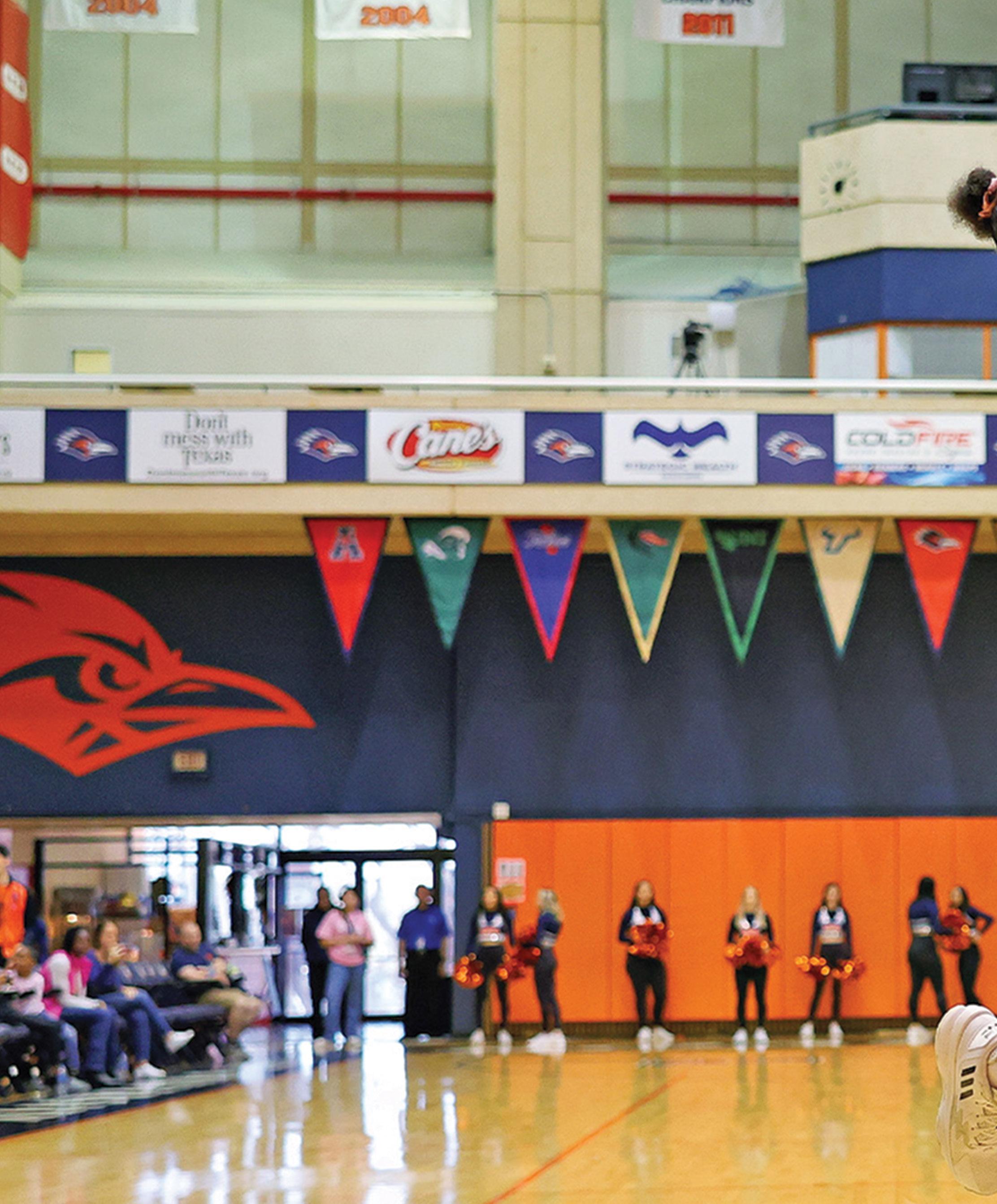
air jordyn
UTSA forward Jordyn Jenkins hangs in the air for a jump shot over UAB defender Maddie Walsh in the Roadrunners’ 76-58 victory on February 11. The UTSA women’s basketball team finished in fourth place in the American Athletic Conference last season and earned a postseason invitation for the first time in 15 years, participating in the Women’s National Invitation Tournament. Led by accomplished head coach Karen Aston, and with star players like Jenkins, Elyssa Coleman, Aysia Proctor and Sidney Love all returning, the Roadrunners will be among the favorites to win the conference championship for the 2024-25 season.

Once homeless and hopeless, William Lansdon has worked his way up the ranks at UTSA with one mission in mind: to provide his fellow veterans with unwavering support
by Shea Conner
William Lansdon may sport the facial hair of a weathered Jumanji survivor, but don’t let his hard exterior fool you.
His personality is quite warm and jovial. A native of Florida’s Big Bend swamplands, Lansdon’s molasses-thick accent has thinned over the years to an inviting drawl that makes him capable of bringing out a smile in just about any conversation. He often spins yarns that captivate an entire room.
And that’s why it’s so jarring when you can feel his heart ache.
Lansdon is the senior program manager for UTSA’s Office of Veteran Military Affairs. In this role, he oversees programming and engagement for UTSA’s student veterans, as well as customer support at the university’s Center for MilitaryAffiliated Students. He says that when veterans approach him for assistance, they often discuss the symptoms they’re experiencing but not the root issues. One example will forever echo in his memory.
On this day, he recalls meeting a fed-up Marine combat veteran who was ready to withdraw from the university. Lansdon wanted to help, so he called him back to his office and they
talked for 45 minutes. Lansdon listened to him describe his issues and connected him to various resources. None of this may seem particularly remarkable, but when Lansdon thinks about how the conversation ended, tears begin welling up in his eyes.
“You know what the gentleman asked me for? A hug,” Lansdon says, pausing briefly to clear the lump in his throat. “That was it. It was not ‘I need money,’ not ‘talk to my teacher,’ not ‘get me tutoring,’ not ‘help me with my housing’ — those are all things I deal with on a regular basis. All he wanted was a hug and to be told, ‘You’ve got this.’”
He pauses longer this time, closing his eyes and letting the power of that moment wash over him.
“I know what he felt like because I’ve been in that seat feeling how he felt,” he says. “But I didn’t have someone on the other side of that desk saying, ‘Here’s how I can help you. Let me give you that hug.’”
Lansdon has found his life’s purpose in not just serving his fellow veterans but in transforming how they’re served. He bears the mental and physical scars of being an Iraq War combat veteran, and yet his post-service struggles resonate with him just as much. Lansdon lived for a very long time under the weight of bleak hopelessness.
ROADRUNNER VET ERANS
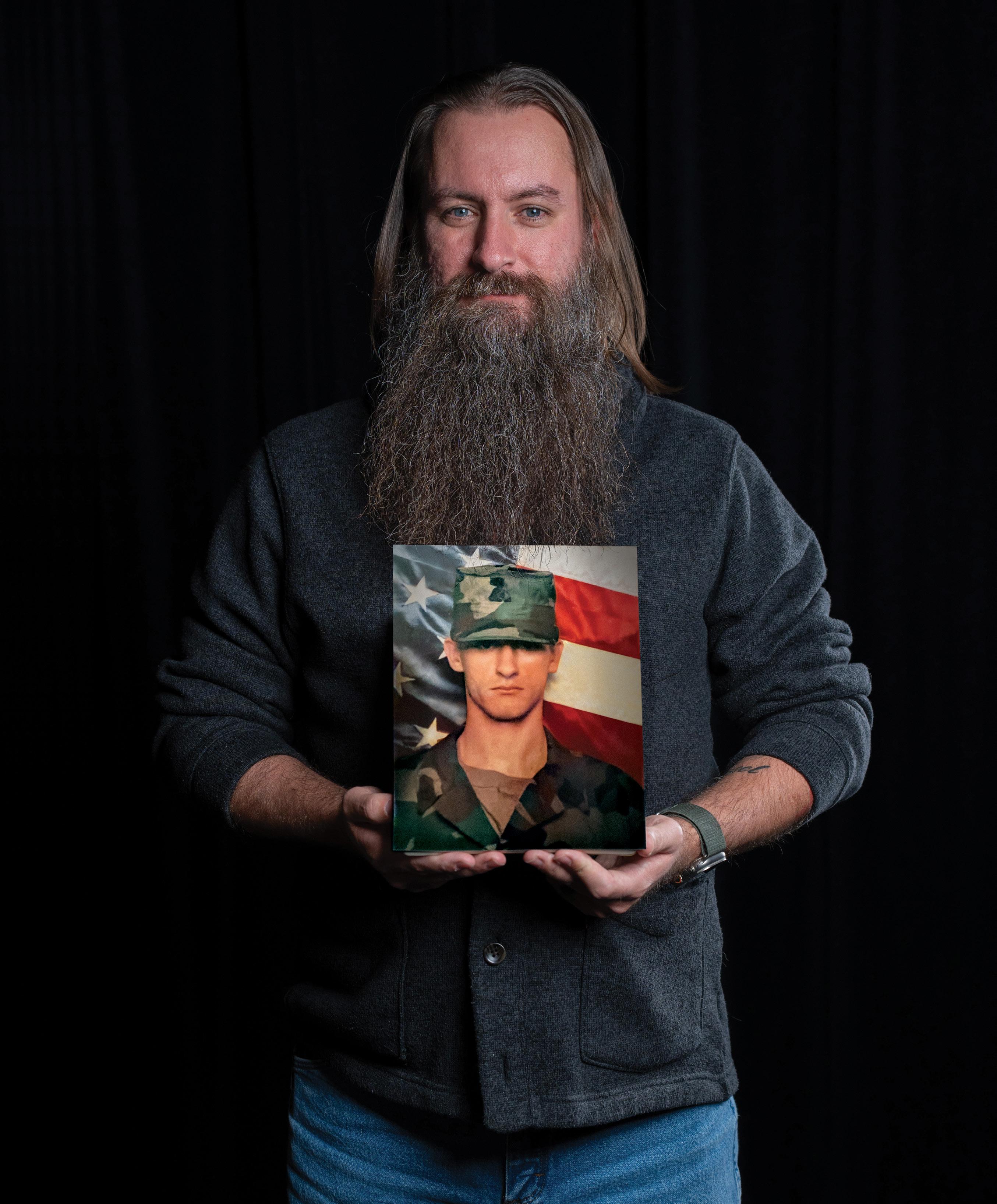

He was born and raised in Steinhatchee, Florida, a small and isolated Gulf Coast fishing town. In Lansdon’s own words, he grew up in poverty with a single dad who was an abusive alcoholic. Steinhatchee offered neither a healthy environment nor a prosperous one as he entered adulthood. “You could either work at the prison or work at the mill — and that’s the next town over,” he says.
He saw the U.S. Army as his best — and perhaps more importantly, first — ticket out of town. Lansdon enlisted as a specialist in division support command for the 1st Armored Division. During his four-year enlistment from 2003 to 2007, he was deployed to Baghdad, Iraq, where he worked as a supply clerk in the “motor pool” at a forward operating base at Baghdad International Airport.
Though he has fond memories of his motor pool pals, whether they were staging breakdancing contests or being forced to move sandbags as punishment for goofing off, he has many more that shake him to his core. Lansdon remembers retrieving vehicles after conflicts and spraying his comrades’ blood and guts off the seats. He still thinks about the cars that charged his base’s gate on his first night in Iraq. The atrocities that involved children are the ones he continues to have difficulty discussing.
"It's hard to deal with a lot of the things that we, as veterans, deal with. But it's much harder when you're dealing with them alone."
When Lansdon got out of the military, he was diagnosed with depression but also struggled with Post Traumatic Stress Disorder (PTSD) that had long gone undiagnosed. On Thanksgiving Day of 2008, seeing only one way to ease the emotional and physical pain he was experiencing, he attempted suicide. Though this attempt was not successful, he continued to spiral for several years.
Eventually, everything fell apart in 2011 and he found himself homeless in the hometown he so desperately wanted to flee. For years, he’d sleep in his car or try to crash on someone’s couch while seeking out odd jobs.
“I spent six months sleeping in a horse trailer,” he recalls, explaining that he met a woman who owned a chrome shop and started doing some work for her. “She couldn’t afford to hire me as an employee, so I stayed in a horse trailer on the back of her property, and she basically paid me in food. I showered under a water hose and slept in a hammock in the back of a horse trailer.”
In 2014, a friend helped him get a contract job as a day laborer in Pennsylvania — and that’s when things started to turn around. Lansdon knew this was the first chapter of his second chance. By 2015, he had enough money for a fresh start, and he found himself
ROADRUNNER VET ERANS
drawn to a new mission to uplift downtrodden veterans. Moving to Military City USA offered him the best path forward. He attended Alamo Colleges for two years and made in-roads with several local veteran organizations. Then, when he arrived as a student at UTSA in the fall of 2017, he quickly sought out a student worker position in the university’s Office of Veteran and Military Affairs (VMA).
Lansdon estimates that he’s had six promotions in the seven years since, working his way up from a peer success partner to a program coordinator to his current role as the senior program manager, overseeing the entire day-to-day operations of the VMA office. According to his peers, Lansdon’s efforts have been instrumental both in fostering an active community of veterans and military-affiliated students and also in providing support that truly reflects their needs.
His input was influential in the creation of UTSA’s Center for Military-Affiliated Students (CMAS), which consolidated VMA, Hazlewood and GI Bill certification, and the VA’s VetSuccess On Campus counselors in a single one-stop location on the first floor of the John Peace Library. Lansdon created and continues to organize the monthly Coffee for Vets event on campus, which has been a huge driver for networking, professional development and communitybuilding among UTSA’s student veterans. He’s also been a key leader in the growth of the university’s veteran resource fair — from a small three-table get-together to a mammoth 40-table event that connects hundreds of student veterans to helpful resources.
All the while, he has continued to assist student vets individually day after day. After years of therapy, Lansdon says he’s become more composed and willing to open up to others, which has only helped him build trust with many of UTSA’s veterans. Michael Logan ’10, M.Ed. ’11, Ph.D. ’19, UTSA’s senior director of the Office of Veteran and Military Affairs, marvels at Lansdon’s ability to listen, comprehend and act reflexively.
“Will is uniquely gifted at empathy. He can identify the needs and trends pretty easily, almost like being able to pull the code out of the matrix and see the big picture,” Logan says. “He is super, super focused on becoming the best at what he does, which is engagement and outreach for veterans.”
Now that he’s in a healthy marriage to a loving wife and is the father of two sons, Lansdon aims to be a catalyst for the kind of change that he’s experienced. Ten years ago, he was a homeless veteran who felt he had no purpose in life. Today, the VA calls him directly to ask for programming guidance. Reflecting on his transformation brings a proud, slightly wry smile to his face. He’s grateful that UTSA has given him the agency to help transform the way the university’s student veterans are served, which is more reflective and less prescriptive than its peers. He hammers that point home to everyone who visits.
“For me, it’s not enough to just change things here at UTSA,” Lansdon says. “My ultimate goal is to change the way higher education looks at this population and supports this population.”
UTSA has the largest population of militaryaffiliated students in the UT System of UTSA’s student body (roughly 5,000 current students) are military-affiliated of UTSA’s alumni are veterans of the U.S. armed forces is the average GPA of military-affiliated students at UTSA; 0.08 higher than the fulltime undergraduate average
Visit Sombrilla Magazine Online to watch an exclusive interview with William Lansdon and read how UTSA’s VMA office is reshaping student veteran support in higher education.
With the help of the UTSA Office for Veteran and Military Affairs, Air Force combat veteran Eloy Rodriguez ’21 worked through several personal issues, put himself on a path toward a successful career and found a much-needed companion
by Shea Conner
Eloy Rodriguez ’21 is still settling into his new life in Reno, Nevada. He recently left a position as a software engineer for General Motors in Austin and made a major crosscountry move to take a new gig working for the cyber division of the VA Office of Information and Technology. Now, he not only enjoys an environment where he gets to work alongside many fellow veterans, but he also revels in the various challenges of tinkering with code on laptops, servers and other devices. “It’s a whole playground,” he says with a big smile.
No one — not his family, not his friends, not his peers, not even Rodriguez himself — could have imagined this outcome six years ago. At that time, he could barely walk down a public hallway without experiencing some iteration of a panic attack, much less live independently 1,700 miles away from his hometown.
“I didn’t see me graduating or having a career. For a long time, I didn’t see me living past 18,” he admits. The number of times he thought he wouldn’t live past a certain age seem to be endless.
Rodriguez was born and raised on the West Side of San Antonio. Growing up, he has fond memories of East Central High School and kindling his passion for electronics by rewiring an enormous record player console. However, there are many more memories he’d rather not mention or even think about.
“It was all gang territory,” Rodriguez says. “I got in the service to get away. My mom wanted a different direction for me.”
Rodriguez enlisted in the U.S. Air Force in the fall of 1999 and would spend the next 15 years of his life serving his country in Afghanistan, Iraq, Qatar and Kyrgyzstan among others. As an electrical systems craftsman, his main focus was base sustainment, setting up the electrical grid that an entire base would depend on. He often dealt with extremely high voltage and did so in perilous situations. Death and danger were unfortunate but constant companions throughout his time in the Air Force.
His final years in the service, however, were arguably among his worst. Shortly after his uncle was diagnosed with Stage 4 Lymphoma, which he survived, and bone cancer took his cousin’s life, Rodriguez was diagnosed with Seminoma and forced to return to San Antonio. Once he

"When he chose me, we were immediately attached. He wouldn’t leave my side and he hasn’t since."
was considered a liability to the military, his career in the Air Force abruptly ended in 2015.
For the next two years, he endured cancer treatments he can only characterize as “extremely rough” in addition to two stints in rehab as he struggled with combat PTSD and his transition back to civilian life. Even as he reached remission, he felt aimless. The structure of the military was all he had known for his entire adult life, and like many longtime veterans, he struggled to adjust to independence. “Lost. Unworthy. Hopeless. Numb. Confused. Abandoned,” Rodriguez describes his feelings at the time. “I knew I was walking, but I was walking with no light to show me the way. It was a very, very hard transition.”
Rodriguez’s first semester at UTSA was a stressful one. As a seasoned 30-something combat veteran who had lived through so much, he didn’t feel like he could relate to the younger students that populated the majority of his classes. He was also staring down a fear he hadn’t experienced in nearly two decades: The anxiety of writing school papers. So, Rodriguez joined VMA’s Veterans Writing Group to get some assistance. Through those meetings, he not only improved as a writer (so much so that he aced his freshman composition class) but found a community of veterans with whom he shared a culture and an unspoken understanding.
He also found a true confidant in William Lansdon, who helped organize the writing group as a student worker. Just like Rodriguez, Lansdon was new to UTSA. Just like Rodriguez, Lansdon had struggled with PTSD and his transition back to civilian life. Lansdon was someone Rodriguez knew he could depend on.
“There’s a cursory sense of trust that you put into another veteran because of your shared experiences,” explains Lansdon, who’s now
I didn’t see me graduating or having a career. For a long time, I didn’t see me living past 18.
the senior program manager for the VMA office. “That gives me the opportunity to have conversations with these students that other people can’t necessarily have.”
That trust faced its toughest test more than a year later when Lansdon strongly urged a reluctant Rodriguez to get a service dog. Trained to respond to the verbal and non-verbal cues of their handlers, service dogs can act as both a source of social support and a behavioral mirror for veterans dealing with the symptoms of PTSD. Lansdon felt a service dog could block for Rodriguez when he was anxious in social settings and comfort him during oncoming panic attacks.
Rodriguez, on the other hand, couldn’t imagine adding canine care to his extensive list of stressors: “I told him, ‘I can’t afford no dog. I’m not working. I’m going to school full-time and I live in a one-bedroom apartment.’ There was a lot going through my head.”
When Lansdon’s wife tracked down a service dog that was available, Rodriguez begrudgingly and noncommittally agreed to go meet the dog. But when Lansdon drove to the trainer’s facility and parked, Rodriguez wouldn’t get out. Panic had set in. His feet were colder than Christmas in Quebec.
“I looked him dead in the eye and said, ‘Get out of my car. We’re going up there and I’m not taking no for an answer,’” Lansdon recalls. "I said, ‘I’ll go up there with you. We’ll do this together. But get out of my car.’”
His hesitancy quickly gave way to happiness. From the moment the dog came out, those two were inseparable. “Nobody else existed to Eloy for the next 40 minutes,” says Lansdon, who lights up as he relives the moment. “For those 40 minutes, nothing else mattered — not his anxiety, not Iraq, not his past — but him and Max.”
“When he chose me, we were immediately attached,” Rodriguez admits. “He wouldn’t leave my side and he hasn’t since.”
Max has been nothing short of a blessing to Rodriguez. Max wakes him up when he’s having night terrors. Max knows to engage with him when he sees his hands are shaking. In crowds, Max creates space between Rodriguez and others. Most importantly, Max has provided constant companionship to someone who long felt alone, unwanted and abandoned.
“The things I struggled with before — the things a normal person does regularly — I’ve just about gotten back to them because of Max,” Rodriguez says. “He’s helped me with just about everything.”
In turn, Rodriguez has made every effort possible to care for Max with the same kindness. So, when the A/C went out in his old clunker of a car in 2019, Rodriguez knew it was a problem. He also knew the car was nearing its demise, so he went to Lansdon and the VMA team to see if they could offer any assistance. They reached out to the Progressive Keys to Progress program, which has now gifted over 1,000 vehicles to veterans across the country. Rodriguez then penned
ROADRUNNER VET ERANS
Eloy Rodriguez crossed the stage at UTSA’s Commencement ceremony in December 2021 with his service dog, Max, by his side. Rodriguez earned his bachelor’s degree in computer science that day. Since graduating from UTSA, Rodriguez has moved to Reno, Nevada, where he is now putting his electrical and software mastery to good use for the cyber division of the VA Office of Information and Technology.

an essay about his need for a new vehicle to get to his classes at UTSA and to keep his hairy, 100-pound companion cool during those scorching San Antonio summers.
Those Veterans Writing Group sessions paid off again. It wasn’t long before Progressive gave Rodriguez a new Toyota Camry packed to the gills with lots of extra goodies.
“They filled the car up with doggy stuff — a bed, multiple toys, a couple of blankets, gift cards for PetSmart and Petco, dog food. And then they gave me $2,000 in gift cards for groceries and gas,” Rodriguez says with a bewildered chuckle. “I still haven’t used all of the gift cards yet.”
Rodriguez credits VMA for hooking him up with several helpful resources throughout his experience at UTSA, such as job leads, career-focused workshops, resume-building resources and even a music therapy class for his anxiety issues.
Graduating from UTSA was one of the proudest moments of Rodriguez’s life, and it was quite memorable for many of the strangers who filmed TikToks of him crossing the stage at the Alamodome that day in December 2021. After all, it’s not often that you see a graduate earn his degree alongside a German Shepherd in a matching cap and gown. Rodriguez knew he’d need Max by his side to get through Commencement. After walking through the curtain, Rodriguez
stared intently into the crowd to blow a kiss to his mom and dad, Norma and Jerry Espinoza, and the rest of his family. And when Max noticed his human was getting a bit too nervous, he went to work.
“When we came out, everyone applauded. But when Max stood up and gave me a hug, the crowd went ballistic,” Rodriguez says. “It was pretty hard for me to walk the stage. Usually, in that type of environment, it’s a lot for me to take in. But Max helped calm me down.”
What the crowd didn’t see was VMA Director Michael Logan ushering Rodriguez to a safe room afterward to get him away from the celebratory fireworks that could have triggered PTSD-related symptoms. Rodriguez can’t help but commend VMA for always going the extra mile for UTSA’s military-affiliated students. As he sits and reflects on his time as a Roadrunner in Reno, he knows their support helped him realize his greatest potential.
Lansdon knows from personal experience that Rodriguez’s transformational journey will ripple far beyond just his life.
“To see that change — that’s huge. Eloy now has a great job, and if he gets married and has children, his children will have a better life with more opportunities. And then his children’s children,” Lansdon says. “I don’t want to overstate it, but we’re changing generations for the better.” S
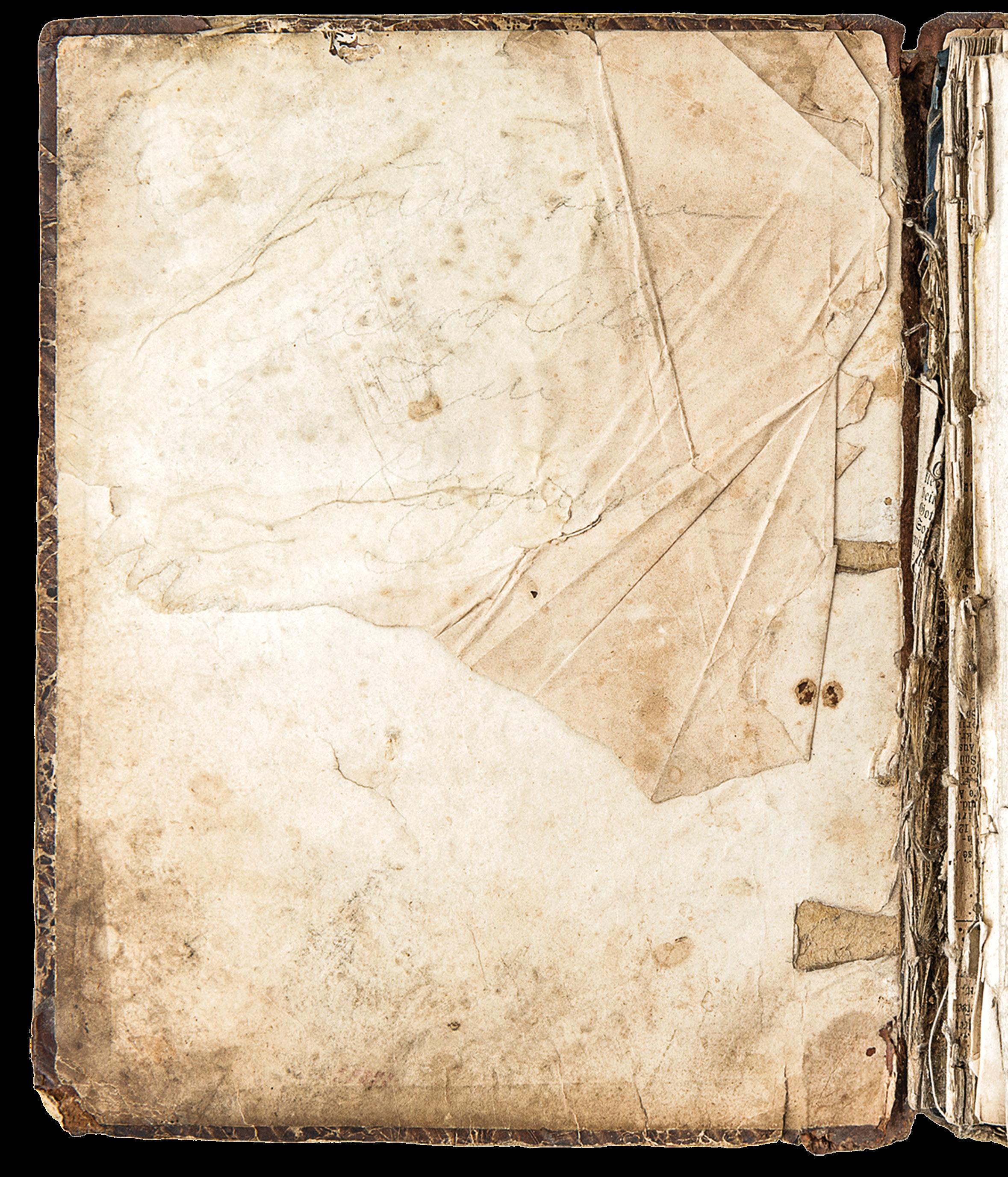


Oleszkiewicz-Peralba reveals links between cultures through their rituals, icons, symbols and stories
by MARGARET LAMAR
Małgorzata Oleszkiewicz-Peralba, professor of Latin American Literary and Cultural Studies in the UTSA College of Liberal and Fine Arts, has spent the last four decades finding the unifying thread of the human spirit among cultures across the globe.
Sombrilla Magazine sat down with her to discuss her legacy of research and teaching.
How would you describe your 36 years of international research?
In my research and books, I’m showing how all of the cultures across the earth are connected and have so much in common through rituals, mythology, and iconography. Somehow there is a subconscious connection that without any contact, in the different parts of the world, people create similar symbols and myths.
The trilogy of books I produced while at UTSA centers on the feminine in cultures that are indigenous to places like Africa and Latin America and how they also have similarities to cultures in Eurasia — places like Russia and Poland. I’m not showing how different they are — just the opposite — I’m showing how similar they are. These connections have been recognized, and two of my books are now being translated into Turkish and Russian.
What is an example of an icon that is found in both Latin America and in Eurasia?
In my book “The Black Madonna in Latin America and Europe,” I compared the function of the Virgin of Guadalupe and the Black Madonna of Częstochowa. Both have an origin that is pre-Christian as mother goddesses. They are dark and they are the protectors of the people, especially the dispossessed. They are the fighters for justice, freedom and independence.
Poland was partitioned for 150 years, and the only thing that united the people was their religion, and especially the Black Madonna of Częstochowa. This function is similar to the one of the Virgin of Guadalupe in Mexico. She unites the different ethnicities and cultures across the country. And there are many, many other examples of this kind of connection.
How did you arrive at your unique way of making connections across cultures?
I have always had a fascination with different cultures because of my exposure at a very early age. I grew up in Poland and Uruguay and then later studied in New York and spent three years conducting fieldwork in Peru for my Ph.D. dissertation. When I became faculty at UTSA and started to publish books, I realized that my research was connecting all of the places I have been and the knowledge that I have as different parts of myself — the Latin American part and the Eastern European part. The books I have published have brought together my whole life.
In my book “Fierce Feminine Divinities of Eurasia and Latin America,” I wrote about Poland and other Slavic countries along with India, Brazil, Mexico and Guatemala. After I saw the spectacles and rituals in Peru, I realized that the religious celebrations — like the fiestas patronales — are the same as the ones I’ve seen in Poland, only with a lot of indigenous cultures mixed in. I’ve discovered that the Polish culture is so similar to Latin American cultures. The most fervent festivals in Latin America are devoted to the Dark Virgins/Mothers of God, and it is the same in Poland, Ukraine and Russia. I discuss this in my book “The Black Madonna in Latin America and Europe.” In my latest book, “Mythology and Symbolism of Eurasia and Indigenous Americas,” I compare iconographic patterns, symbols and myths, and show their striking similarities on different continents.
How do you build trust and connect with the people in your research?
One time I was investigating the syncretic Romani Black Madonna Sara-La-Kâli at
an annual festival in Southern France. Roma people come from all around the world to the festival, but they mostly do not trust anyone from outside their cultures. On the last day of the festival, I went into this church with a subterranean crypt where people go and pray to Sara-La-Kâli. I saw some women there and I spoke to one of them. I began to ask personal questions — Why do you worship her? And why in this particular place? The woman was so open to me, and she told me so many things heart-to-heart because I was talking to her in private person-to-person, not as a journalist or an anthropologist. To do these things I need to know their native language, and I talked to her in French. So that experience was a great example of how I am able to connect and get the fuller story.
How do your students react to discovering these cultural connections?
I have found so much receptivity in my students. The students are fascinated with the information that I open them to in my classes. So many students have never heard much about the philosophy of indigenous cultures, even though they may have family ties to Mexico or other Latin American countries. For many people this is a revelation, and they say that this changed their lives. They start writing research papers and master’s theses exploring their identity and their own roots. They start to explore the world, and that’s the most gratifying to me.
What drives you to write and teach about these cross-cultural threads?
I think I have a responsibility to make people understand the value of these cultures and their great power and wisdom — and to help people respect them. I do it because I’m passionate about it. S
